
More Science & Technology























































































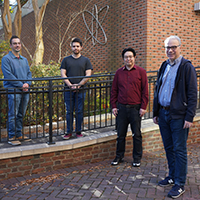
The computers and sensors of the future are being engineered one atom at a time. A team of theoretical quantum physicists at William & Mary have partnered with materials scientists to develop a new tool for harnessing the power of subatomic conductivity.
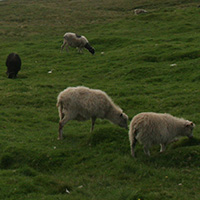
The Faroe Islands, an archipelago between Norway and Iceland, were once believed to have been settled by Viking explorers in the mid-9th century CE. Thanks to new analysis of ancient sheep DNA, the remote, North Atlantic islands are now shown to have been inhabited by British Isle shepherds centuries before the Vikings arrived.
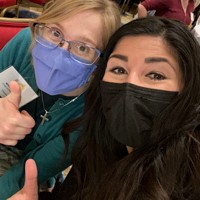
In November, a group of William & Mary undergraduates attended the annual Commonwealth of Virginia Cancer Research Conference, and two of members of the Class of 2023 came back to Williamsburg bearing “best presentation” honors.

Launched in 2020, GRI created the fellowship to help respond to real-world policy changes and develop the next generation of leaders through a multidisciplinary approach — engaging researchers from different academic fields, perspectives and backgrounds in collaborative projects across 10 research labs.
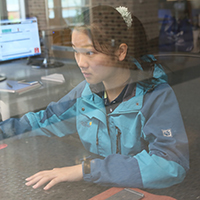
It started with students approaching faculty members to create self-designed majors around the use of data.
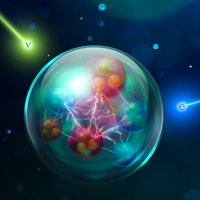
Neutrinos may be the key to finally solving a mystery of the origins of our matter-dominated universe, and preparations for two major, billion-dollar experiments are underway to reveal the particles’ secrets.
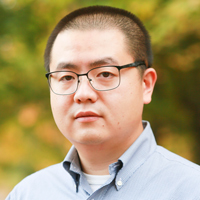
Large segments of the world’s research community refocused in early 2020 in response to the growing COVID-19 pandemic.
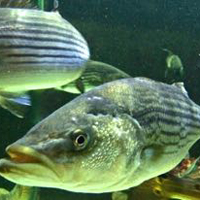
The annual report of “dead-zone” conditions in the Chesapeake Bay from William & Mary's Virginia Institute of Marine Science indicates the overall severity of hypoxia was slightly higher than usual during 2021, due largely to the relatively early onset and late termination of low-oxygen waters.
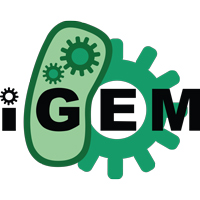
William & Mary’s undergraduate iGEM team won a Gold Medal and was nominated for a major award at the iGEM Giant Jamboree, the annual conference and award ceremony of the International Genetically Engineered Machine (iGEM) Foundation.
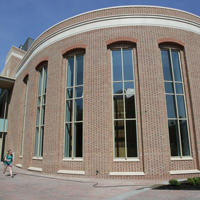
William & Mary’s Commonwealth Center for Energy and the Environment had its genesis about a decade ago after members of the university’s Board of Visitors expressed interest in encouraging new research, especially interdisciplinary initiatives.
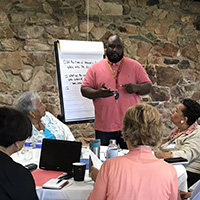
In departments and initiatives throughout William & Mary, efforts have been underway for nearly two decades to build up relationships with descendant communities and include their members as a vital part of the university’s research efforts.
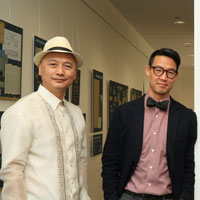
Jason Chen, associate professor of education at William & Mary, is working with Professor of Theatre and Asian & Pacific Islander American Studies Francis Tanglao Aguas are using a grant from the National Science Foundation to create a professional development curriculum.
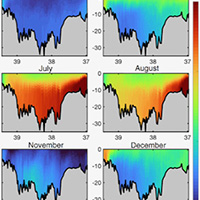
A new study by researchers at William & Mary’s Virginia Institute of Marine Science updates that trend, reveals a clear seasonal pattern, and quantifies the relative contributions to warming brought by the atmosphere, Bay tributaries, and the ocean.
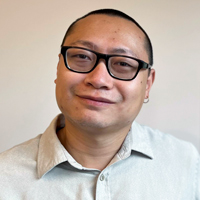
Yijie Zou is a Ph.D. student in William & Mary’s Department of Anthropology. He is planning a return to the west African country to continue observing the interaction of the Chinese community and native Ghanaians.
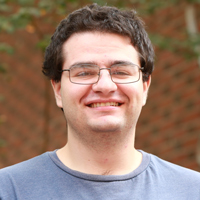
Daniel Kovner, a doctoral student in the Department of Physics at William & Mary, will continue his investigation of quantum chromodynamics as one of 65 graduate students supported by the U.S. Department of Energy’s Office of Science Graduate Student Research (SCGSR) program.
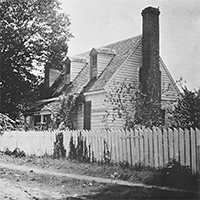
The two educational institutions have announced the creation of a joint research initiative to document the history of the school and its students, which will lead to new interpretive programming that explores the complicated history of this 18th-century institution dedicated to the education of Black children.
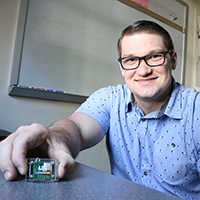
In science there is a term called “ground truth,” the baseline from which data is judged for accuracy. For William & Mary student Ken Koltermann, the term may better be described as “boots-on-the-ground truth.”
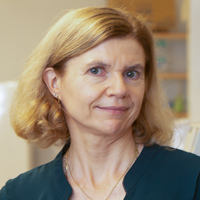
Many of the most effective human medicines and therapies have had their origin in nature. Myriam Cotten says there’s a good reason for researchers to look to flora and fauna when seeking new therapies.
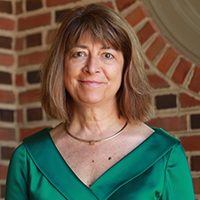
William & Mary announced today it will take a significant step forward in building, sustaining and reinterpreting its historical and cultural resources under a new Office of Strategic Cultural Partnerships, to be led by long-time university community member Ann Marie Stock.
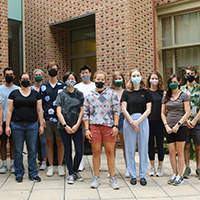
For New Yorkers, Upper Manhattan is known as the site of Grant's Tomb, the Apollo Theater, The Cloisters, Sylvia's Restaurant and Sugar Hill. For W&M chemist Rachel O’Brien, the slice of city is the ideal marine-urban interface to study changes in the Earth’s atmosphere and its potential impacts on air quality and climate.
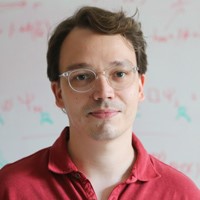
Jens Boos recently was awarded the 2021 P R Wallace Thesis Prize of the Canadian Association of Physicists (Division of Theoretical Physics) and the Winnipeg Institute for Theoretical Physics.
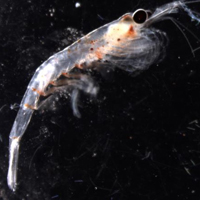
A new study shows that some zooplankton also swim up and down repeatedly within this daytime sanctuary, responding to cloud shadows so subtle they escape the notice of shipboard oceanographers.
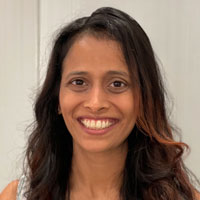
Patch-Seq is shorthand for “patch-clamp, followed by next-generation sequencing.” It’s a collaborative procedure that’s only been performed in a few labs.
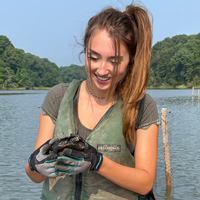
Diamondback terrapins have always found it hard to catch a break.
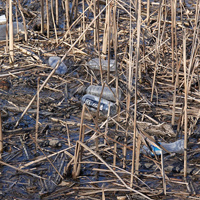
William & Mary's Virginia Institute of Marine Science has partnered with JASON Learning for the Beyond the Plastic Bottle Challenge, an educational activity in which teams of students create a sustainable plan that reduces the debris associated with one source of microplastic pollution in their community.
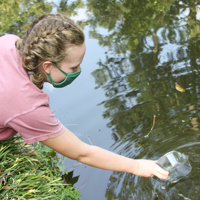
The Crim Dell jellyfish are back — bigger and more numerous than ever.
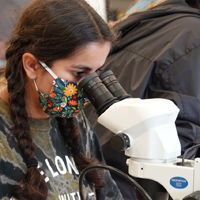
William & Mary's Virginia Institute of Marine Science has launched its new Professional Master of Arts program, welcoming seven Master of Arts students along with 24 others seeking Master of Science and Ph.D. degrees.
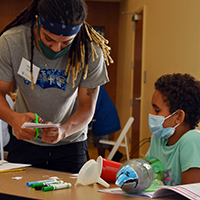
On a blistering hot day in August, the courtyard of the School of Education became a busy testing pad, launching dozens of rockets engineered from plastic soda bottles.
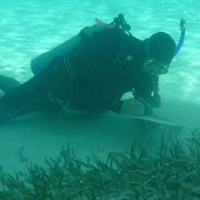
The Coastal and Estuarine Research Federation has chosen emeritus professor Robert “JJ” Orth of William & Mary’s Virginia Institute of Marine Science as a joint recipient of its 2021 Odum Award for Lifetime Achievement, along with Ken Heck of the University of South Alabama’s Dauphin Island Sea Lab.
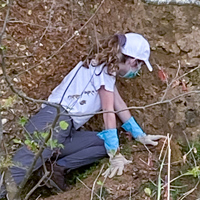
William & Mary is experiencing a bumper crop in geology majors, the result of a hot job market created by a tectonic shift in the geosciences industry.
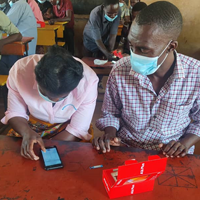
Its first study, supported by the Bill & Melinda Gates Foundation, demonstrated the profound impact — but also the challenges — of reducing the smartphone gender gap in emerging economies.

A tech startup co-founded by a William & Mary computer scientist has been awarded a $250,000 grant from the National Science Foundation.
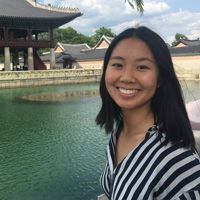
Amy Zhao’s knowledge of blockchain technology goes back to a course she took through William & Mary’s Global Research Institute. Now she wants to use her expertise to help others, including artists who face intellectual property threats.
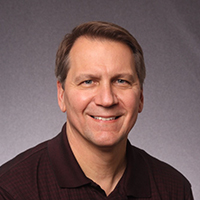
Michael Deschenes is professor and chair of Kinesiology & Health Sciences at William & Mary. He specializes in the neuromuscular system, the network of nerves that connects our brains to our muscles.
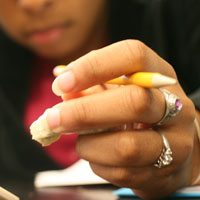
A team of geology faculty from William & Mary have co-authored study that is a deep dive into 20 years of statistics, logging efforts to achieve racial and ethnic diversity in what stubbornly remains the whitest corner of the STEM world.
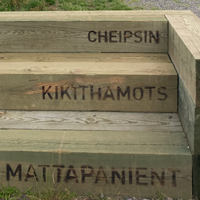
Martin Gallivan, professor and chair of William & Mary’s Department of Anthropology, was a consultant in the design of Machicomoco State Park.
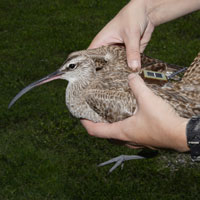
Whimbrels are marathon migrators, flying great distances twice a year between their South American wintering grounds and their summer breeding areas in far northern Canada.
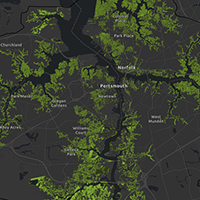
The Elizabeth River Project (ERP) has teamed with researchers from the Virginia Institute of Marine Science and William & Mary to build an online mapping tool that can help the non-profit and other community partners better incorporate environmental justice issues into planning and restoration efforts.
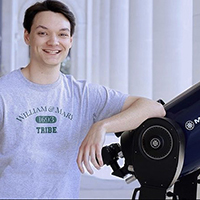
Tyler Hutchison is a rising junior and physics major at William & Mary who has set his sights (and camera) on the stars.
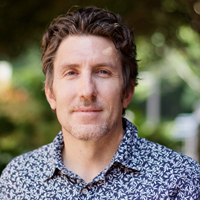
William & Mary has named nationally renowned ecologist Derek Aday as its next dean of the School of Marine Science and director of the Virginia Institute of Marine Science (VIMS).
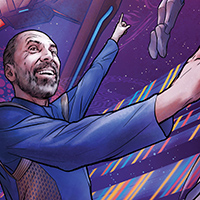
Mohamed Noor ’92 brings the science to science fiction as a consultant for “Star Trek: Discovery”
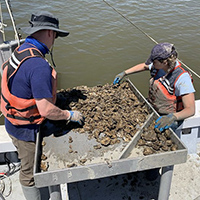
Rise in disease virulence due to evolving parasite, not just drought.
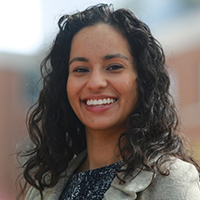
Four W&M students were recently awarded fellowships from the Southern Regional Education Board (SREB), a program aimed at increasing diversity among college and university faculty.
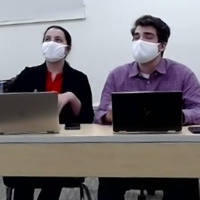
Organizers of the Global Innovation Challenge at William & Mary (WMGIC) drew on the lessons from last year’s pandemic pivot to online format to put together an even larger WMGIC V for 2021.
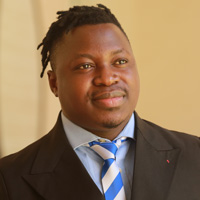
The royal palace at Ijebu-Ode was the center of economic, political and ritual life in the great Ijebu kingdom for a millennium, maybe more.
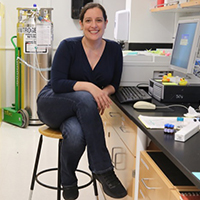
It took a pandemic for the world to understand the importance of something Rachel O’Brien has been researching for the better part of two decades.
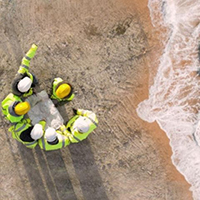
States around the country are increasingly taking the lead on flooding and resilience. In light of the recent activity, innovation, and demand for guidance in this topic area, the Virginia Coastal Policy Center at William & Mary Law School has joined the newly launched State Resilience Partnership.

William & Mary researchers will be allocated a portion of those funds to enable students to perform consultative services for small and medium businesses located in the Southeast region of the Commonwealth, in targeted sectors such as the maritime and defense industries.
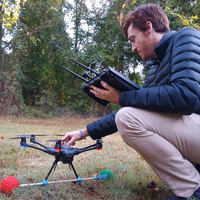
The Delmarva Peninsula, which includes Virginia’s Eastern Shore, is the avian version of a southbound interstate during the fall migration of raptors and songbirds.
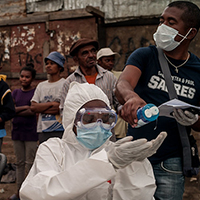
Newly published research, led by William & Mary undergraduate Morgan Pincombe ‘21, analyzes public health disparities among 113 countries in the wake of the COVID-19 pandemic.
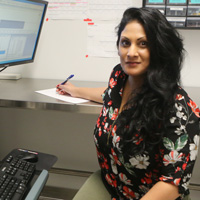
Two Ph.D. students in William & Mary’s Department of Applied Science are recipients of Doctoral Scholars Program Fellowships of the Southern Regional Education Board (SREB), a program aimed at increasing diversity among college and university STEM faculty.
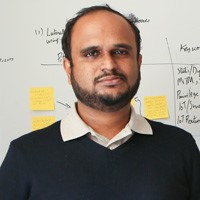
As most of us weigh the conveniences and challenges of Internet-connected “smart houses,” Adwait Nadkarni is thinking on a higher level altogether.
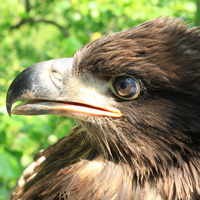
It’s a new era for bald eagles in the Chesapeake Bay drainage — and the end of an era for a veteran team of eagle researchers.
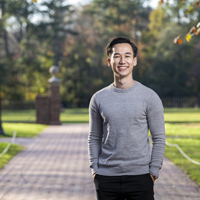
A 2021 Rhodes Scholarship finalist, Matt Crittenden ’21 seeks to build systems in data and policy that contribute to a better world and to serve as a role model for future Asian American students in the global governance and development community.
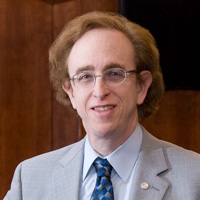
William & Mary has been selected to join a partnership of higher-education institutions that aims to form and build a new discipline that melds public-policy concerns with technological fields.
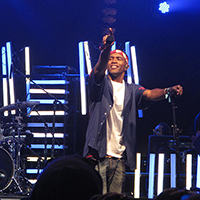
The American singer, songwriter, producer, visual artist and two-time Grammy winner Frank Ocean can now say that mathematics proves he’s the most influential artist of the 21st century.
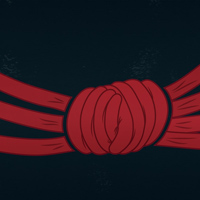
AidData researchers uncovered 100 loan contracts during a three-year study that details China’s lending practices to developing countries.
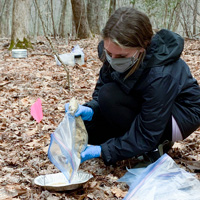
Everybody knows that squirrels love nuts, but every squirrel knows that some nuts are better than others.

A new minor program in integrative conservation will be offered to William & Mary undergraduates as early as the fall, 2021 semester.
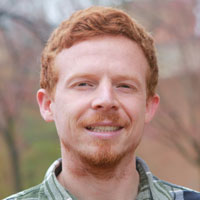
The S. Laurie Sanderson Awards for Excellence in Undergraduate Mentoring recognizes the graduate students in Arts & Sciences who mentor undergraduate students.
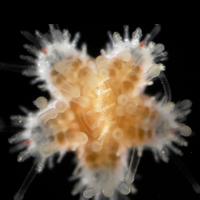
To grow, the juvenile sea stars must eat, and W&M researchers discovered that what the young sea stars eat often turns out to be each other.
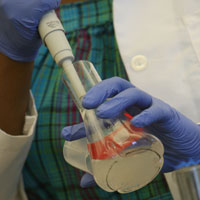
A digital showcase of undergraduate accomplishment will roll out throughout the month of April.
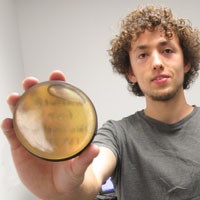
Work that began in 2017 as a spring break assignment for members of a William & Mary freshman seminar unexpectedly blossomed into a serious investigation into the presence of a radioactive isotope in honey in the eastern U.S.
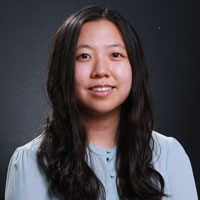
Three William & Mary students have been named Goldwater Scholars, joining a select group of undergraduates studying the natural sciences, mathematics and engineering.
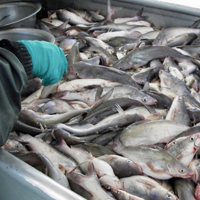
Study raises concerns of further establishment in U.S. East Coast estuaries
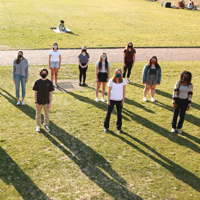
New data collected by student researchers show that 97% of William & Mary’s campus community is wearing masks in public spaces. The university is one of roughly 60 institutions partnering with the Centers for Disease Control and Prevention to conduct an eight-week mask observation study as part of the CDC’s Mask Adherence Surveillance at Colleges and Universities Project (MASCUP).
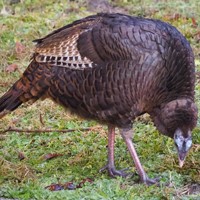
Ornithology students at William & Mary traditionally travel the commonwealth, piling into vans at 3 a.m. to head out to where the birds are. But because of the pandemic, they can't get in a van together. Instead, they are doing it all on foot.
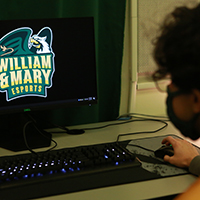
William & Mary’s Esports Training and Research Center will include a research lab and training facility designed to foster interdisciplinary collaborations around gaming.
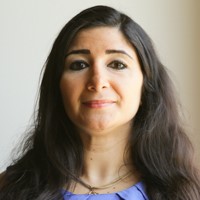
A William & Mary chemist is a member of an international team that found a way to easily synthesize 2-methyl-1,4-benzoquinone and a series of derivatives in the lab, and subsequently conducted a series of biological tests on the molecules.
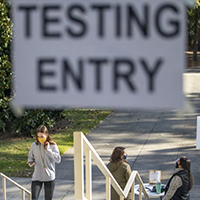
Relying on medical research, scientific data, guidance from federal and state agencies, and consultation with professional peers, the six-member group weighs health concerns and practical effects of the university’s pandemic response on the lives of the approximately 9,000 students and 700 faculty and staff members.
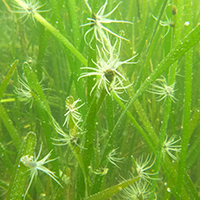
New research shows that biodiversity is important not just at the traditional scale of short-term plot experiments, but when measured over decades and across regional landscapes as well.
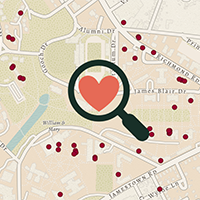
As fellows at W&M’s Center for Geospatial Analysis, Kira Holmes ’17 and Colleen Truskey ’17 showed the power of maps.
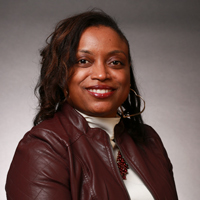
William & Mary biologist Shantá D. Hinton has become a member of the Public Affairs Advisory Committee of the American Society of Biochemistry and Molecular Biology (ASBMB).
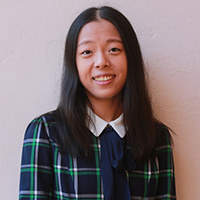
Olivia Ding is the 2021 recipient of William & Mary’s Thomas Jefferson Prize in Natural Philosophy. The honor is endowed by the trustees of the Thomas Jefferson Memorial Foundation to recognize excellence in the sciences and mathematics in an undergraduate student.
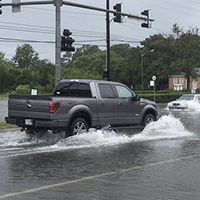
The annual update of their sea level “report cards” by researchers at William & Mary’s Virginia Institute of Marine Science adds further evidence of an accelerating rate of sea-level rise at nearly all tidal stations along the U.S. coastline.
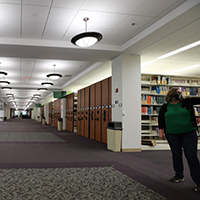
Six members of the Virginia Research Libraries (VRL) recently completed contract negotiations with Elsevier, the largest publisher of science, technology, engineering, and math (STEM) scholarly journals.
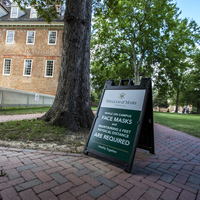
University employees identified ways to adapt during the pandemic by taking on new roles, shifting jobs and making new connections.
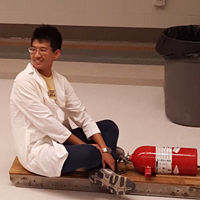
William & Mary’s chapter of the Society of Physics Students put together an impressive slate of fun and educational activities for 2019-2020, and when a pandemic hit, they went virtual, barely breaking stride.
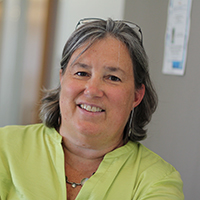
Melissa J. Moore ’84 is the chief scientific officer of platform research at Massachusetts-based Moderna Inc.. She is a key part of the biotech company’s effort to produce 200 million COVID-19 vaccines for the U.S. government to distribute to Americans across the country.
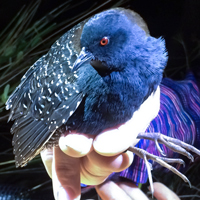
A bird that since John James Audubon’s time has scurried under the radar of all but the most attentive ornithologists, conservationists and naturalists has received protection from the U.S. Fish and Wildlife Service.

A new two-year grant from the Hewlett Foundation will help AidData bolster engagement with policy makers and influencers in Africa
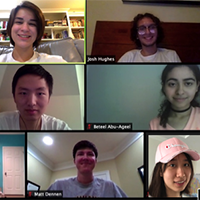
A team of undergraduates at William & Mary has earned high honors in the world’s largest synthetic biology competition for engineering a potential COVID-19 therapeutic.

Shantá D. Hinton was a pioneer in the study of a group of enzymes known as pseudophosphatases, particularly one known as MK-STYX. Pseudophosphatases were long considered a research dead-end, but Hinton and a handful of other labs discovered that there was nothing pseudo about these proteins.
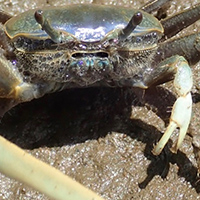
Shift to new habitat helps fiddler crabs leave some troubles behind.
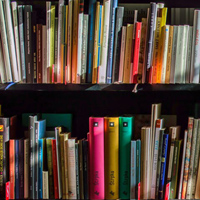
The following books by William & Mary faculty members were published in 2020.
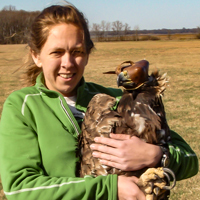
Bryan Watts, the director of William & Mary’s Center for Conservation Biology, and Fletcher Smith, a research associate at the CCB, are part of an effort to share animal-tracking data to get a handle on what is ahead for the diverse animal populations of the changing Arctic and near-Arctic habitats.
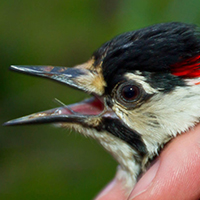
The Piney Grove Preserve has shifted from receiving red-cockaded woodpeckers from other populations to donating woodpeckers. The movement marks a milestone in the recovery of the species and is a testament to the valuable work of W&M’s Center for Conservation Biology.
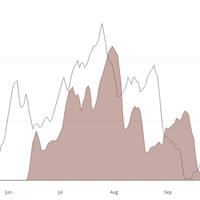
Bay hypoxia in 2020 was below average due to cool temperatures, wind events and nutrient reductions.
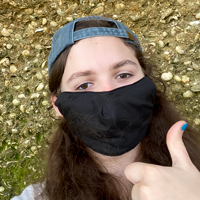
When people think of the Colonial National Historical Park, they think of, well…history. But it has a feature that goes back even farther than the landing at Jamestown: fossils.
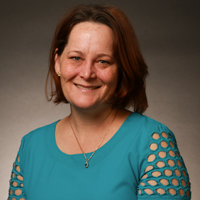
The American Physical Society has named William & Mary physicist Patricia Vahle as a 2020 APS Fellow. Vahle, a professor in the university’s Department of Physics, was nominated by the APS Division of Particles and Fields.

As the race for a COVID-19 vaccine presses on throughout the globe, a team of budding synthetic biologists at William & Mary are researching another equally critical tool in the fight against the novel coronavirus – therapeutics.
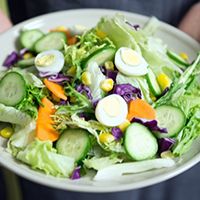
A healthy diet means a healthier you, which also means a healthier planet, right? Well, it’s complicated.
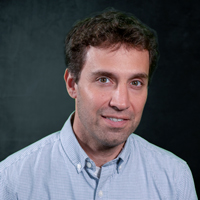
South Sawtooth Lake on Canada’s Ellsmere Island is deep, cold and filled with answers for climate-change scientists.
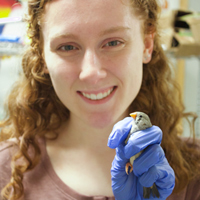
John Swaddle, faculty director at William & Mary’s Institute for Integrative Conservation, and a group of graduate students have published a paper evaluating a new window-film product designed to reduce bird-window collisions.
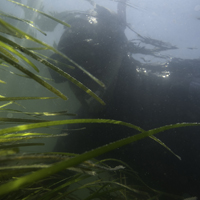
Project offers blueprint for future efforts to maintain & restore coastal habitats.
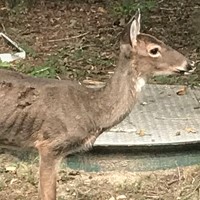
A rash of deer deaths in the College Woods is likely the result in an overabundance of biting midges, according to Randy Chambers, director of William & Mary’s Keck Environmental Laboratory.
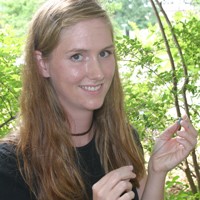
Dan Cristol is the co-editor of a special issue of the journal Ecotoxicology, along with David Evers of the Biodiversity Research Institute.
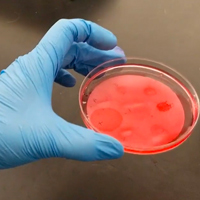
William & Mary’s STEM faculty across several departments have some up with a variety of creative — and even ingenuous — solutions to conducting lab sections in a pandemic.

In her award-winning paper, W&M student Megan Hogan ’21 examines the use of deepfake technology as a form of national defense. Now she plans to combat disinformation during the 2020 Presidential election.
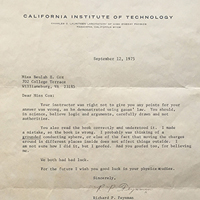
Early in her career as a William & Mary student, Beulah Elizabeth Cox turned in a physics exam that contained what became one of the most famous incorrect answers in science.
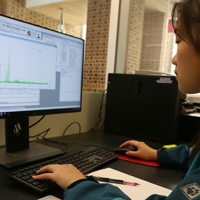
This summer, as educators around the world prepared for teaching a fall semester remotely amid pandemic, faculty from William & Mary’s Data Science program already had a head start – or rather, a jump start.
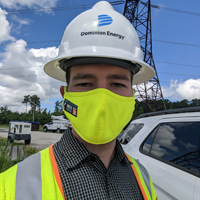
Ryan Chaban was one of six graduate students and postdoc fellows selected for the inaugural Commonwealth of Virginia Engineering and Science (COVES) Fellowship.
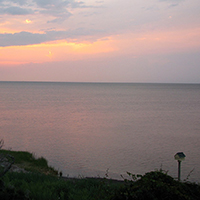
William & Mary Law School’s Virginia Coastal Policy Center (VCPC) is undertaking a project with the Albemarle-Pamlico National Estuary Partnership (APNEP) to increase engagement among tribal communities, government agencies, and universities.
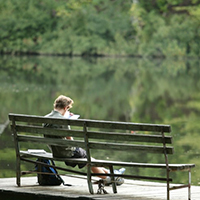
For the past seven years, Dorothy Ibes has been using William & Mary’s outdoor space as a laboratory to understand the relationship between human health and human access to nature.
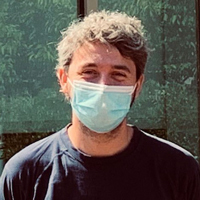
Daniel Borrus began his Ph.D. research at William & Mary with what he thought was going to be an easy experiment, just to get his feet wet in neurophysiology research.
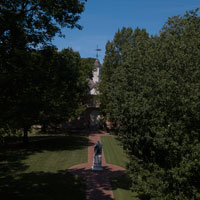
Summer 2020 looked and felt different because of COVID-19 restrictions, but William & Mary students doing research projects using Honors Fellowships thrived amidst change.
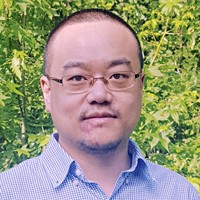
A postdoctoral researcher in the Department of Physics at William & Mary, Wenliang “Bill” Li is studying proton structure — just like many people who conduct their nuclear physics research at Jefferson Lab. But he’s studying a new aspect of it: the backward perspective.
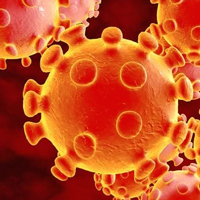
A William & Mary mathematician and an undergraduate student are part of a team that has developed an interactive, user-friendly dashboard tracking COVID-19 infections and deaths across the U.S.

AidData, a research lab based at William & Mary’s Global Research Institute (GRI), has been building a new dataset that sheds light on China’s vast portfolio of grant- and loan-financed projects around the globe.
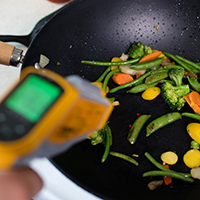
As COVID-19 and stay-at-home orders upended life as we know it, W&M chemist Rachel O’Brien turned her kitchen into a makeshift laboratory. She and her lab students literally cooked up experiments in their homes by measuring aerosols released during cooking.
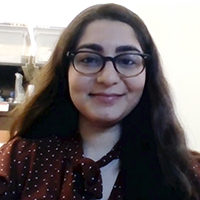
This is a tale of two yeasts. Well, actually, three yeasts.
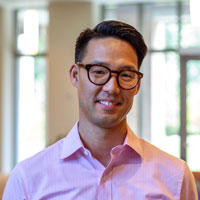
Jason Chen, Gerdelman Family Term Distinguished Associate Professor at the William & Mary School of Education, has secured a new grant from the National Science Foundation that aims to combat inequity by building a national alliance of researchers working together to effect large-scale change.
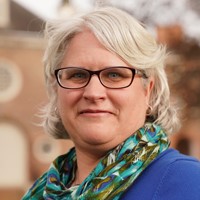
Faculty with William & Mary’s Center for Geospatial Analysis instill graduate and undergraduate students with the skills and understanding to use mapping and visualization techniques in projects ranging from art history to field biology.
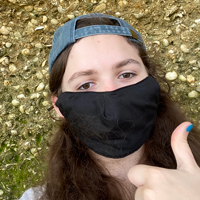
William & Mary's geology department is going ahead with field work this summer, heading to their outcrops and fossil beds armed with more than their rock hammers. Faculty mentors have come up with an evolving set of creative ways to maintain social distance.
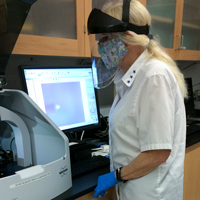
Things are going to be different this fall in the core labs of William & Mary’s Applied Research Center. What won’t change is the dedication of the ARC staff to the research mission of the university and the commonwealth.
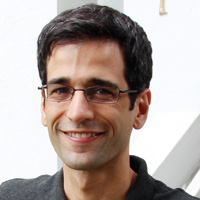
W&M’s Ariel BenYishay contributes expertise in geospatial impact evaluation to a land titling paper recently published in the journal Nature Sustainability.
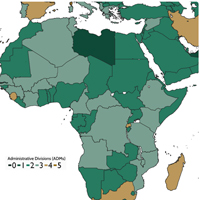
The geoBoundaries database is the product of three years of work by a group that consisted substantially of William & Mary undergraduates and recent alumni.

The inaugural Raymond A. Mason School of Business Data Feast competition challenged teams of business analytics graduate students to test their technical and business acumen skills using real data.
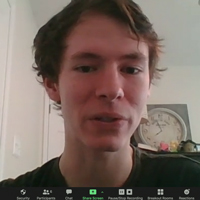
A team of three William & Mary undergrads hit the back of the net this spring, scoring top honors in an international mathematics competition with their analysis of soccer team strategies.
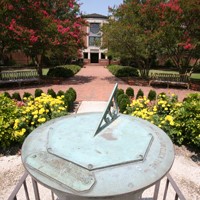
The upheaval and restrictions of COVID-19 won’t stop undergraduate research over the summer at William & Mary. But prudence and social-distancing measures will make the experiences quite a bit different from previous years.
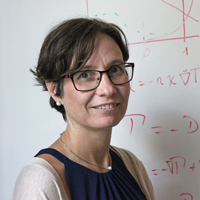
A team at the DIII-D National Fusion Facility led by a William & Mary physicist has made a significant advancement in physics understanding that represents a key step toward practical fusion energy.
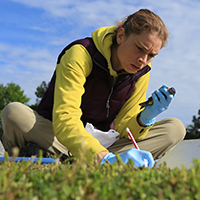
Heather Kenny, a biology master’s student at William & Mary, has spent the past two years studying the parenting behavior of bluebirds. Specifically, she is working to understand how human-made noise influences nesting and productivity.

Bit by bit, byte by byte, artificial intelligence has been working its way into public consciousness and into everyday computer use.
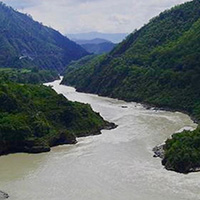
Greater tropical rainfall may increase microbes’ release of CO2 from soils into air, according to a study conducted by an international team led by Dr. Christopher Hein of William & Mary’s Virginia Institute of Marine Science.
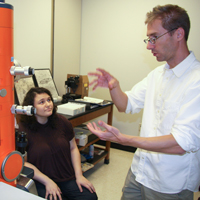
Back in February, virologist Kurt Williamson answered questions about COVID-19 when the outbreak was beginning to spread. We asked him to take another look at the coronavirus pandemic.
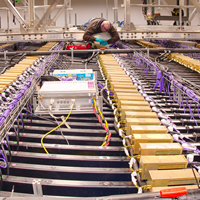
The beam is off, but high energy physics research is very much on at one of the world’s premier particle physics labs —and William & Mary physicists are among those monitoring the still-active NOvA neutrino detectors.
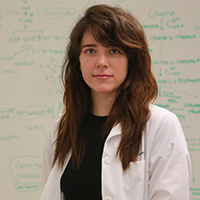
For her research into the underlying neurobiology of attentional processing in the context of schizophrenia drug discovery, Eden Maness is the recipient of the William & Mary Graduate Studies Advisory Board Award for Excellence in Scholarship in the Natural and Computational Sciences.
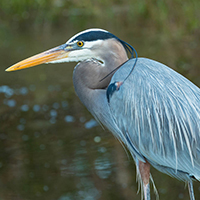
One of many things that the COVID-19 pandemic will be remembered for is the introduction of the term “social distancing” to the global lexicon. For bird behaviorists, the term and its variants have been in use for over a century.
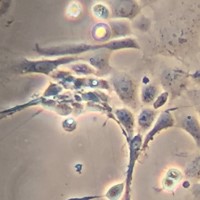
The research lab of Patty Zwollo, an immunologist and professor of biology at William & Mary, has discovered that just as whales swallow plastic thinking it’s food, some cellular components of the immune system in fish “swallow” bits of microplastic that they mistake for invading pathogens.
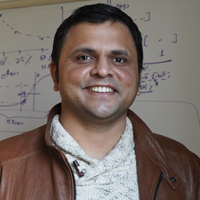
Adwait Jog, an assistant professor in William & Mary’s Department of Computer Science, is working to make computers more efficient by improving the architecture of the machines, necessary for computational handling of projects ranging from machine learning to genomics.
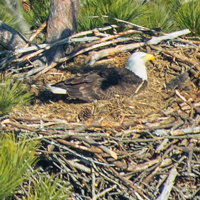
Some good news: The eagle population of the James River alone has exceeded the repopulation goal for the entire Chesapeake Bay.
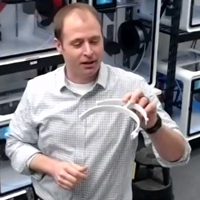
An entrepreneurial, engineering-based mindset allowed one William & Mary class to make a real contribution to the fight against the COVID-19 pandemic during its second week of online instruction.

William & Mary’s move to modified academic operations is prompting departments to look into alternative ways of conducting dissertation defenses of Ph.D. candidates.
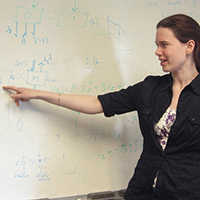
If Leah Shaw gets any time to herself during this period of social distancing, she plans to run a simulation — on social distancing.
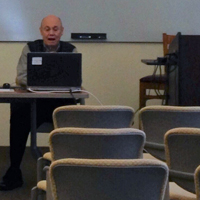
The staff at William & Mary’s Osher Lifelong Learning Institute found themselves in a bit of a quandary as guidelines for social isolation were announced during the COVID-19 outbreak.
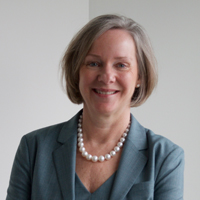
Maria Donoghue Velleca, an accomplished scholar and award-winning educator who served as senior associate dean for faculty affairs and strategic planning at Georgetown University’s College of Arts & Sciences, has been selected as William & Mary’s dean of the Faculty of Arts & Sciences, President Katherine A. Rowe announced today.
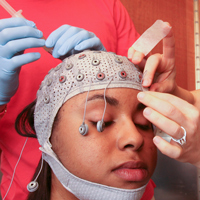
The COVID-19 closings will have a substantial effect on human-subjects research at the university.
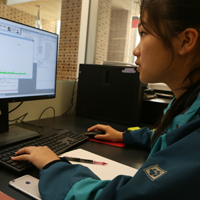
The State Council of Higher Education for Virginia has approved William & Mary’s proposal for a new bachelor of science degree in data science.
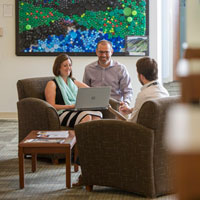
As William & Mary students and faculty prepare to move temporarily to remote learning, the newly-established Studio for Teaching & Learning Innovation has set up a support system to assist faculty.
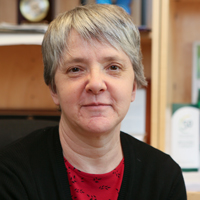
It was the first day of class, and Beverly Sher had a question for the William & Mary freshmen enrolled in her Emerging Diseases class. “I asked, ‘Have you guys been reading about this coronavirus?’”
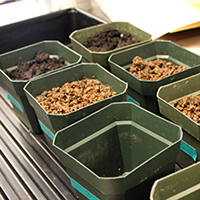
Jon Kay, a visiting assistant professor of geology at William & Mary, is using the hypothetical situation Matt Damon’s character finds himself in — being stranded on Mars and forced to grow his own food — as a real research question for students in his new COLL 150 class Science and Science Fiction.
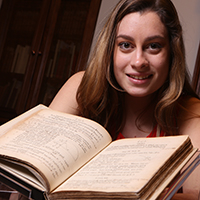
A persistent mystery surrounding one of William & Mary’s most treasured possessions apparently has been solved, by a 19-year-old sophomore.
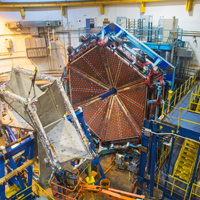
In the first direct probes of the core of the nuclear interaction, researchers find that leading theories on interactions between protons and neutrons describe them well, even in conditions where the protons and neutrons strongly overlap, such as in neutron stars.

Professor Rob Hale of William & Mary’s Virginia Institute of Marine Science is lead author of a new “Grand Challenges” paper commissioned to mark the 100th anniversary of the American Geophysical Union, the world’s largest association of Earth and space scientists with more than 60,000 members in 137 countries.
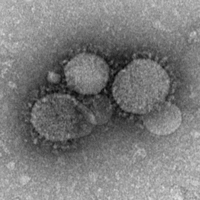
Kurt Williamson is a virologist, an associate professor in William & Mary’s Department of Biology who specializes in the study of viruses. He offers some scientific context for the ongoing COVID-19 outbreak.
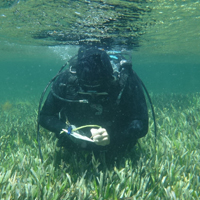
A joint Australian-U.S. team reveals that one group of seagrasses, Australian species of the genus Posidonia, has evolved yet another remarkable adaptation for ocean survival: a winged seed whose shape harnesses the force of underwater currents to hold it on the seafloor for rooting.
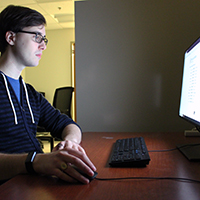
Undergraduates working in a lab inside the Integrated Science Center are currently studying ways to foster constructive dialogue in an era of increased partisan divide.
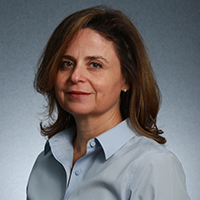
William & Mary computer scientist Evgenia Smirni has been elected to the 2020 class of fellows of the Institute of Electrical and Electronics Engineers.
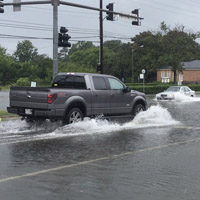
The annual update of their sea level “report cards” by researchers at William & Mary’s Virginia Institute of Marine Science adds evidence of an accelerating rate of sea-level rise at nearly all tidal stations along the U.S. coastline.
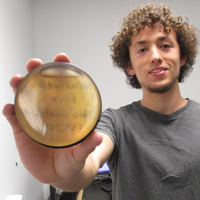
That natural, bee-produced sweetener you stir into your tea and lavish on your toast may be laced with cesium-137.
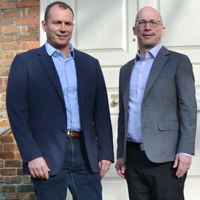
The leaders of William & Mary’s Institute for Integrative Conservation envision their nascent enterprise as a smooth pathway to the empowerment of students with the knowledge and skills to engage in the knotty environmental issues of the 21st century.
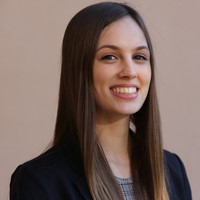
Grace Solini, a member of William & Mary’s class of 2020, will receive the Thomas Jefferson Prize in Natural Philosophy.
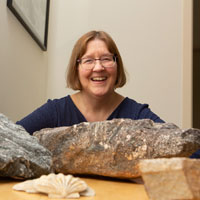
Heather Macdonald, Chancellor Professor of Geology at William & Mary, will be awarded the 2020 Thomas Jefferson Award at a Jan. 29 ceremony.
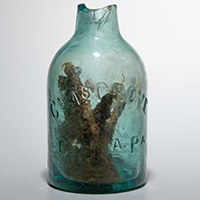
The bottle was recovered as part of an archaeological dig at the Civil War-era site of Redoubt 9, which today is more commonly known as exits 238 to 242 of I-64 in York County.
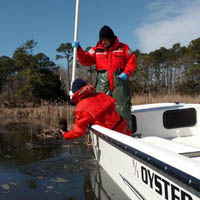
The study confirms that poultry wastewater inhibits microbes’ capacity to remove nitrogen.
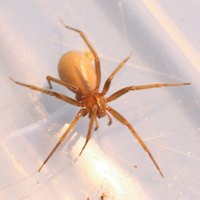
The Japanese swordsmiths didn’t discuss the secrets of their craft and neither does the brown recluse spider.
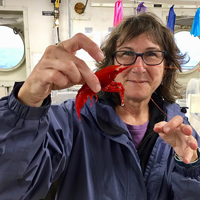
A new study in Nature provides an unprecedented, decade-long global view of the vertical migration of zooplankton.
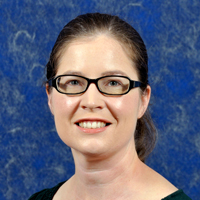
Molly Mitchell of William & Mary’s Virginia Institute of Marine Science has earned an Early Career Leadership Award from the US CLIVAR Program for her efforts to develop and share sea-level forecasts and other planning tools with coastal risk managers and emergency responders in Virginia and the mid-Atlantic region.
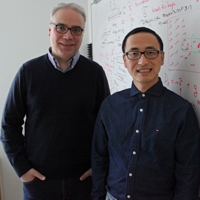
William & Mary physicists discovered a secret to superconductivity in twisted bilayer graphene — and it has to do with the way electrons "dance."
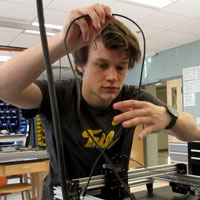
A team of William & Mary students was talking about project ideas. “We were asking, well what would you want a robot to do?" said Aidan Connor ’22. "Someone said, ‘Solve math problems.’ So...”
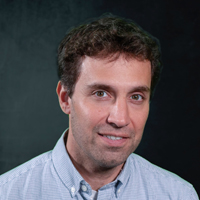
William & Mary geologist Nicholas Balascio will receive the Outstanding Faculty Award, the commonwealth’s highest honor for instructors at Virginia’s institutions of higher education, public and private.
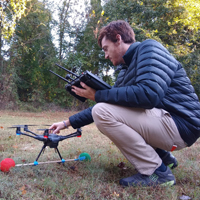
Timothy Boycott, a graduate student in the Department of Biology at William & Mary, was recently awarded the Christine Stevens Wildlife Award from the Animal Welfare Institute.
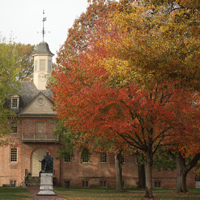
William & Mary has received a $19.3 million gift from an alumna who wishes to remain anonymous to establish a landmark Institute for Integrative Conservation.
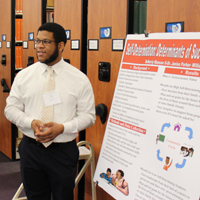
William & Mary students create new knowledge every day. On Oct. 25 more than 140 W&M student researchers packed Swem Library to put their new knowledge on display.
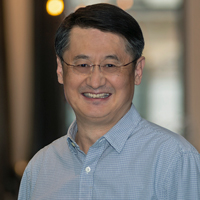
A team led by William & Mary physicist Shiwei Zhang has been allocated supercomputer time on a machine at Oak Ridge National Laboratory.
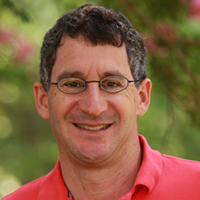
Dan Cristol, a professor in the Department of Biology at William & Mary, will publish his 200th “Birding” column in the Virginia Gazette on November 23.
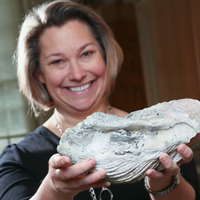
Oysters once dominated the ecosystem of the Chesapeake Bay, and it would be difficult, if not impossible, for the Bay to return to full ecological health without restoring Crassotrea virginica to its glory days of the Chesapeake’s apex filterer.
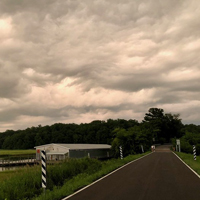
An annual model-based report on “dead-zone” conditions in the Chesapeake Bay during 2019 indicates that the total volume of low-oxygen, “hypoxic” water was on the high end of the normal range for 1985 to 2018, a finding that scientists actually consider relatively good news.
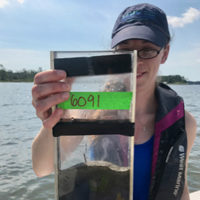
A new field study by researchers at William & Mary's Virginia Institute of Marine Science shows minimal impacts from oyster aquaculture overall, suggesting that low-density oyster farms located in well-flushed areas are unlikely to impair local water quality.
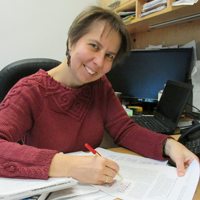
William & Mary physicist Irina Novikova has been elected to the 2020 class of Fellows of the Optical Society (OSA).
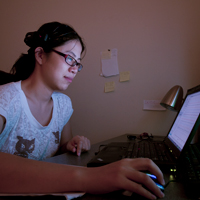
William & Mary will receive more than $1.3 million annually in additional state support as part of a bipartisan initiative designed to generate 25,000 additional computer science degrees in Virginia by 2039.
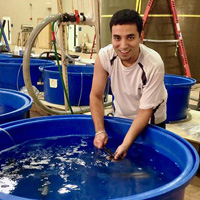
A new study by researchers at William & Mary's Virginia Institute of Marine Science warns that blue catfish — an invasive species in several Chesapeake Bay tributaries — tolerate salinities higher than most freshwater fishes.
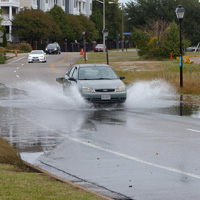
The third annual “Catch the King” event — when trained volunteers hit the shores of Hampton Roads to map the reach of the year’s highest astronomical tide — took place Sunday morning, and though the tide’s reach may not have been quite as “majestic” as in recent years, the data it offered to citizen scientists were still just as golden.
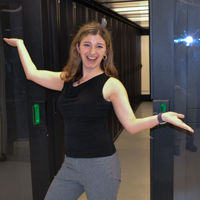
Rachel Oberman got a call one Thursday evening during her sophomore year. A presentation for the Bill and Melinda Gates Foundation needed corrected boundary maps for all countries in the world. By Monday.
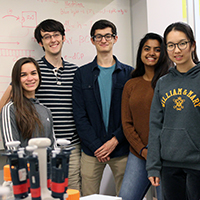
The next big thing in materials science may already be here – and it’s clogging up your showerhead.
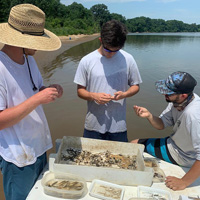
Preliminary results from an ongoing long-term survey conducted by researchers at William & Mary's Virginia Institute of Marine Science suggest an average year class of young-of-year striped bass was produced in Virginia tributaries of the Chesapeake Bay in 2019.
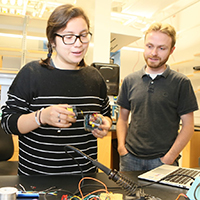
They are ubiquitous, nearly invisible and may determine the future of our planet. Known as aerosols, the small specks of matter can be found in nearly every ecosystem, but are tough to study in the wild. A team of students could change that.
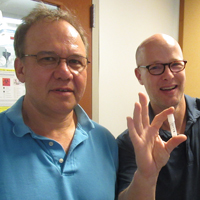
A new paper by faculty and students looks at the relationship among deer, a single species of tick and a single tick-borne disease.
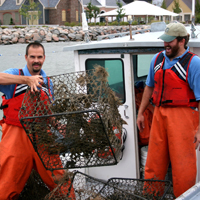
The app will empower students and engage citizens in pollution reduction.
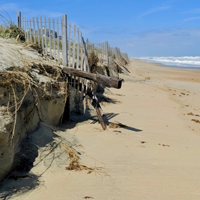
A team co-led by Associate Professor Christopher Hein of William & Mary’s Virginia Institute of Marine Science has won a three-year, $687,850 federal grant to study how natural and constructed dunes respond when impacted by coastal storms and rising seas.
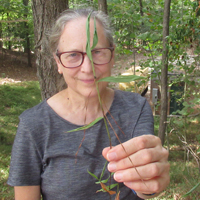
A group of volunteers joined forces to clear out the Japanese stilt grass from William & Mary’s Crim Dell. It’s part of a continuing effort to rid Crim Dell of invasive plants and return native species of vegetation to the university landmark.
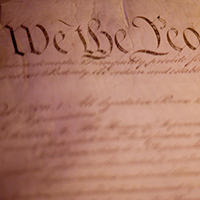
With impeachment in the news, W&M News sat down with historian Karin Wulf to discuss the origin of the impeachment process outlined in the U.S. Constitution.
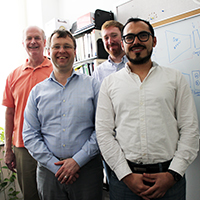
The key to developing secure technology for the future may hinge on making life a little easier for software engineers today.
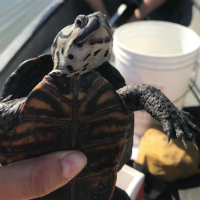
With help from the Charles Center, a William & Mary student researcher spent the summer studying a little-known population of turtles on the York River. She will soon present her study at a symposium of conservation experts.
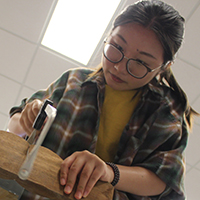
This fall, the Muscarelle Museum of Art will serve as both an exhibit space and laboratory for a new interdisciplinary course that blends art and science.
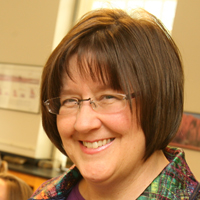
The Geological Society of America devoted a large portion of its 2019 annual meeting to recognizing the contributions of William & Mary’s Heather Macdonald.
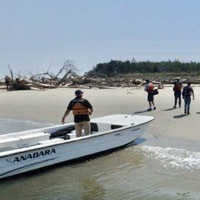
The drill — part of the National Preparedness for Response Exercise Program, or PREP — was based on a scenario in which a container ship moving north 20 miles off Virginia’s seaside Eastern Shore strikes an unknown object and discharges 2,500 barrels of heavy fuel oil.
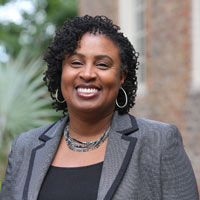
Rosalyn Hargraves, associate vice president for assessment and transformation in the Division for Inclusive Excellence at Virginia Commonwealth University, will spend the 2019-20 academic year at William & Mary as an American Council on Education Fellow.
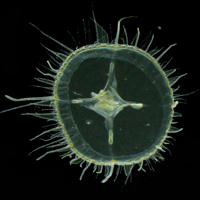
Yes, they have stinging tentacles. No, they won’t sting you — unless you’re a tasty-looking zooplankton.
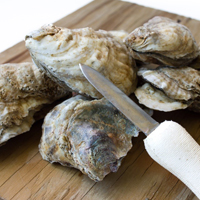
A consortium of 14 shellfish geneticists from 12 East Coast universities and government agencies has won a five-year, $4.4 million grant funded by NOAA Fisheries through the Atlantic States Marine Fisheries Commission to develop new tools to accelerate and localize selective breeding in support of oyster aquaculture.
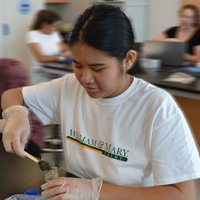
A new lab of select William & Mary freshmen takes on the study of bacteriophages each fall. It’s a program supported by the Science Education Alliance of the Howard Hughes Medical Institute called the Phage Hunters Advancing Genomic and Evolutionary Science (SEA-PHAGES) project.
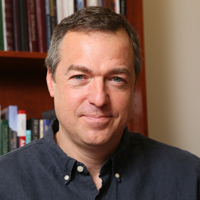
William & Mary psychological scientist Peter Vishton is taking a leave of absence to join the National Science Foundation as the Program Director for the Developmental Sciences.
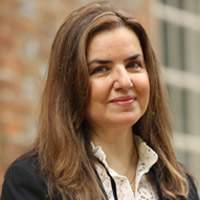
Peggy Agouris became William & Mary’s sixth provost on July 1. W&M News checked in with the Athens, Greece, native to get her thoughts on everything from first impressions to goals for the year.
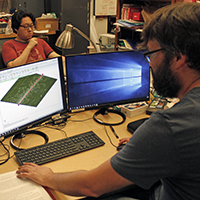
Seth Aubin, associate professor of physics at William & Mary, recently received a grant from the U.S. Department of Defense to develop a new type of instrument capable of detecting hidden infrastructure for weapons of mass destruction.
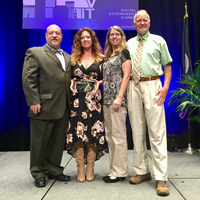
Two research teams from William & Mary’s Virginia Institute of Marine Science received 2019 Governor’s Technology Awards for developing online tools that allow users to track water levels in real time throughout Hampton Roads and to assess the health of the Commonwealth’s coastal wetlands.
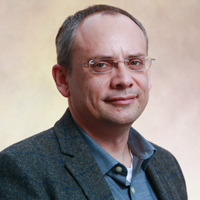
A William & Mary physicist has been awarded computing time on a U.S. Department of Energy machine that holds current bragging rights of world’s fastest supercomputer.
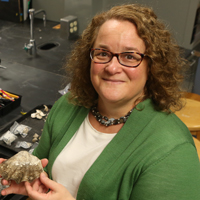
Large-scale environmental change began when our ancestors started agriculture, according to a recent paper in the journal "Science."
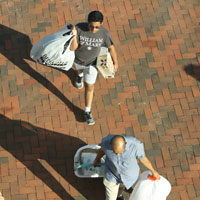
To help start the fall semester on the most positive of notes, W&M News asked 10 faculty members for their best advice for new students.
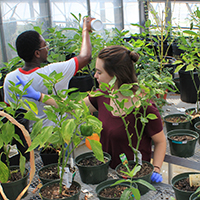
The William & Mary greenhouse has started a new program to limit the use of chemicals by relying on predatory insects for pest control. It’s the biological equivalent of fighting fire with fire – and so far it’s working.
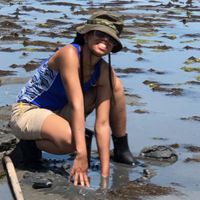
Undergraduates from across the nation spent 10 weeks in the field and laboratory this summer during the 30th annual “Research Experiences for Undergraduates” program at William & Mary’s Virginia Institute of Marine Science.
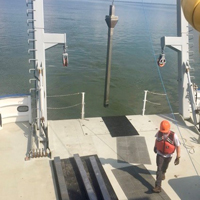
A team cores James River in search of newly discovered breakdown products.
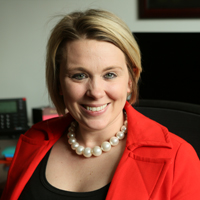
Meredith Kier, has secured a grant worth $300,000 from the National Science Foundation for an exploratory research study.
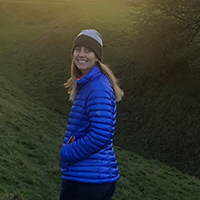
Carrie Dolan’s research requires her to work with one foot in the world of big data and the other foot, well, just about anywhere in the world.

Shantá Hinton’s group is one of the few laboratories in the United States studying pseudophosphatases, proteins whose very name makes many researchers shy away.
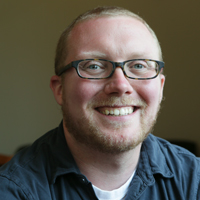
William McNamara has been named a 2019 Henry Dreyfus Teacher-Scholar, joining an already impressive slate of Dreyfus honorees in William & Mary’s Department of Chemistry.
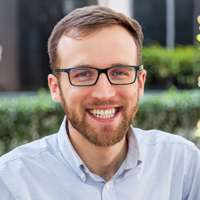
Kurtis Bartlett was awarded the 2018 Jefferson Science Associates Thesis Prize, recognizing his Ph.D. dissertation in the William & Mary physics department.
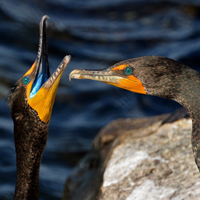
A study led by Emily Rivest of William & Mary’s Virginia Institute of Marine Science provides a conceptual framework to help guide future research in this emerging field.
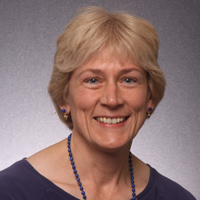
Lizabeth Allison, Chancellor Professor of Biology at William & Mary, has been awarded the Ruth Kirschstein Diversity in Science Award by the American Society for Biochemistry and Molecular Biology.

An annual survey led by researchers at William & Mary's Virginia Institute of Marine Science mapped an estimated 91,559 acres of underwater grasses in the Chesapeake Bay and its tidal tributaries in 2018.
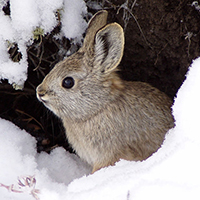
W&M biologist Matthias Leu and a team of undergrads data-mined government records to assess threats to domestic species over time. Their findings are grim.
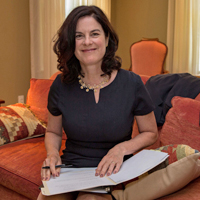
William & Mary President Katherine A. Rowe has been appointed to the board of the Northern Virginia Technology Council.
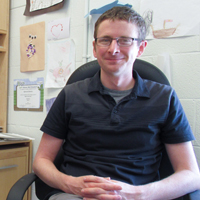
Justin Stevens, a William & Mary physicist, is among the young U.S. scientists recognized as recipients of the Presidential Early Career Award for Scientists and Engineers (PECASE).
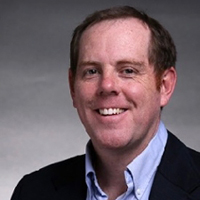
Associate Professor Matt Kirwan of William & Mary's Virginia Institute of Marine Science has been honored with a Presidential Early Career Award for Scientists and Engineers.
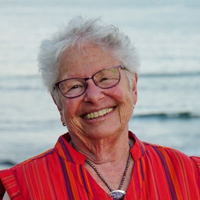
Professor Iris Anderson of William & Mary’s Virginia Institute of Marine Science has been honored by the world’s leading coastal research society for her sustained accomplishments and important contributions to human understanding of estuaries and coastal ecosystems.
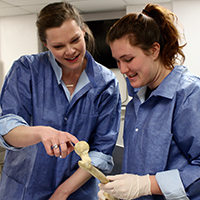
William & Mary's Human Anatomy Lab is a class that for over 50 years has allowed undergraduate students to gain an understanding of anatomy using actual human cadavers.
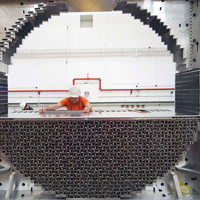
Jefferson Sciences Associates (JSA) has announced the award of nine graduate fellowships to doctoral students for the 2019-2020 academic year. Three of the fellowships went to students at William & Mary.

The Center for Conservation Biology has compiled 2019 survey results for bald eagles nesting along the James River. The breeding population has increased to 302 pairs, making the James the most significant tributary for eagles throughout the Commonwealth.
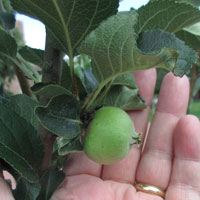
William & Mary’s Isaac Newton apple trees no longer stand outside Small Hall. The trees likely succumbed to a bacterial disease known as fire blight.
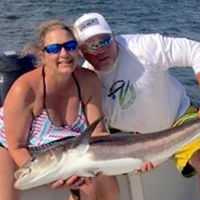
The Virginia Game Fish Tagging Program sets new record as angler recaptures tagged cobia after nearly 10 years at large in the Chesapeake Bay and coastal ocean.
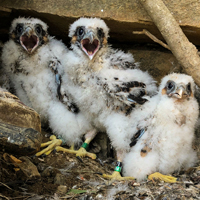
Sometimes bird banding is a rather sedate activity. You set up your mist nets a few steps away from your truck, open up a chair and wait. This was not that kind of banding trip.
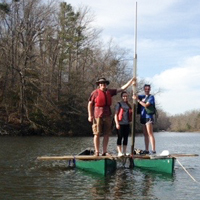
A team of William & Mary geologists led by Jim Kaste and Nick Balascio has mined the time-capsule sediment of Lake Matoaka to find evidence that traces the development of the Industrial Revolution and the Age of the Automobile.
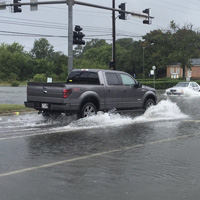
William & Mary's Virginia Institute of Marine Science has selected researchers Derek Loftis and Lisa Kellogg as winners of its inaugural Dean & Director’s Innovation Fund competition.
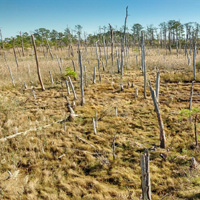
Ghost forests and abandoned farmland highlight the vulnerability of rural coasts to sea-level rise.
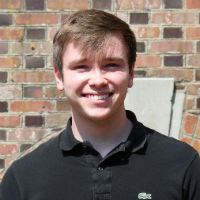
Luke Schwenke ’19, a Data Science major from Warren, Virginia, earned first place in the Intermediaries & Reinsurance Underwriters Association’s 2018 Scholars Program Essay Contest. His winning essay earned him a $10,000 top prize from the IRUA and publication in the most recent edition of their quarterly journal for insurance industry professionals, the Journal of Reinsurance.
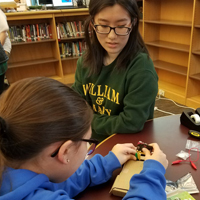
William & Mary’s Society of Women in Computing has been on a winning streak. For the second year in a row, the student group has received the Outstanding Community Service Award from the Association for Computing Machinery for their efforts to encourage middle school girls to become involved in computing.
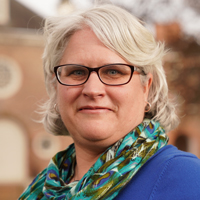
Classes in William & Mary’s new certificate program in geospatial sciences will begin in the fall. The program recently received final approval from the State Council of Higher Education for Virginia (SCHEV).
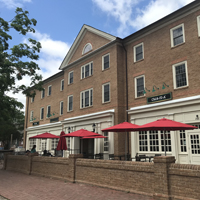
William & Mary will open a second entrepreneurship hub for students in Tribe Square next fall. Launchpad, the region’s business incubator for the City of Williamsburg, James City County and York County, also will relocate to the mixed-use property.
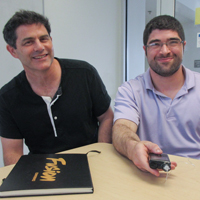
A W&M student has an idea for a drug designed to alleviate the misery of hyperglycemic episodes that Type 1 diabetics experience many times a week.
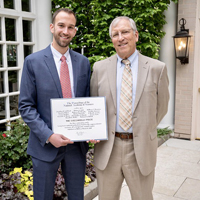
Proceedings of the National Academy of Sciences has bestowed a 2018 Cozzarelli Prize on a paper authored by a multi-disciplinary research team led by Jonathan Lefcheck of William & Mary's Virginia Institute of Marine Science.
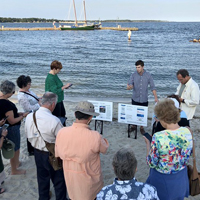
The project's chief science liaison is Derek Loftis, an assistant research scientist at William & Mary's Virginia Institute of Marine Science.
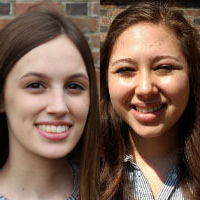
William & Mary’s legacy of success with the Goldwater Scholarship Program continues in 2019 as two students have been named to the exclusive list of undergraduate scholars. Hana Warner ’20 and Grace Solini ‘20 are among just 496 undergraduate students nationwide to be named Goldwater Scholars in 2019.
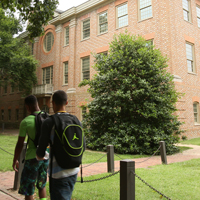
William & Mary’s Board of Visitors approved a resolution to join a state-wide incentive to increase the number of Virginians earning computer science and related degrees.
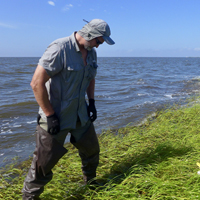
A long-term study suggests the oil from the Deepwater Horizon is still affecting the salt marshes of the Gulf Coast and reveals the key role that marsh grasses play in the overall recovery of these important coastal wetlands.
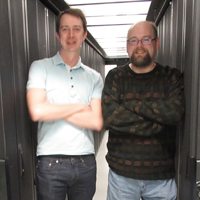
Nathaniel Throckmorton was ruminating on the zero lower bound and had reached a point at which he needed William & Mary’s giant abacus.
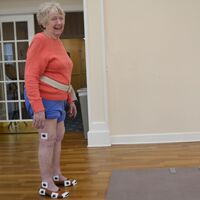
The Center for Balance and Aging Studies is conducting a set of analysis and intervention sessions at Williamsburg Landing, a Life Plan Community for those 62 and older.
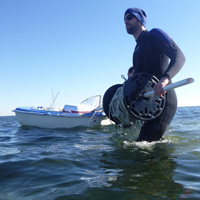
A comprehensive analysis of more than 11,000 previous coastal-habitat measurements suggests that mangroves and seagrasses provide the greatest value as “nurseries” for young fishes and invertebrates, providing key guidance for managers of threatened marine resources.
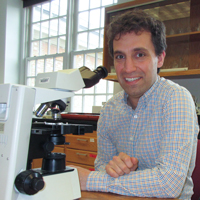
Nick Balascio, an assistant professor in William & Mary’s Department of Geology, is a member of a group of scientists that found evidence that changes in the strength of AMOC can serve as an precursor to massive future climate changes.
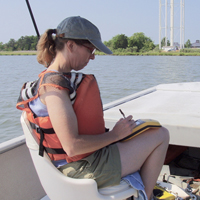
Researchers at William & Mary's Virginia Institute of Marine Science have just finished the latest iteration of a suite of online maps that can display the condition of the Chesapeake Bay shoreline along its entire length.
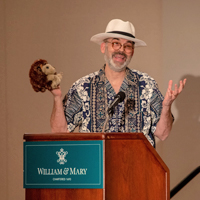
Students, faculty and staff, and members of the community flooded the Chesapeake rooms in the Sadler Center on March 14 to watch the annual Raft Debate in which three professors, deserted on an imaginary island, represented their disciplines in an battle for a single spot on an imaginary raft.
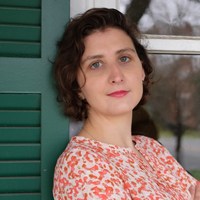
Sofya Zaytseva, a fifth-year Ph.D. student in the Department of Applied Science at William & Mary, is working to engineer a better oyster reef.
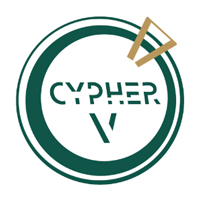
William & Mary’s student-run hackathon returns to Swem Library with a new name, but bearing the same commitment to providing a welcoming, inclusive and sleep-free creative session.
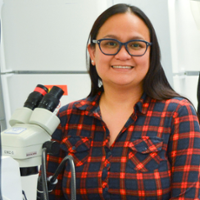
An interdisciplinary team of researchers based at William & Mary has been drilling down on the workings of the pre-Bötzinger complex for more than a decade.
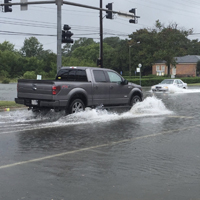
Researchers at William & Mary’s Virginia Institute of Marine Science have issued the first annual update of their sea level “report cards,” marking 50 years of water-level observations from 1969 through 2018.
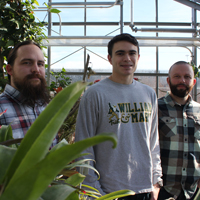
The old-fashioned strawberry is having a renaissance, thanks to new genetic research.
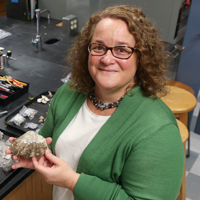
Jennifer Kahn is part of a worldwide group of scientists who are using archaeological data and ecological modeling to examine how different cultures use animal and plant taxa in diverse ways.
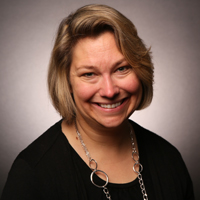
Rowan Lockwood is one of two William & Mary faculty to be honored with Virginia Outstanding Faculty Awards in 2019, along with W&M Law School’s Jeffrey Bellin, University Professor for Teaching Excellence.
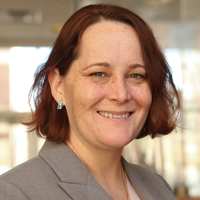
Patricia Vahle, Mansfield Professor of Physics at William & Mary, will talk on “The Quest to Understand Neutrino Masses” at the annual meeting of the American Association of the Advancement of Science in Washington, D.C.
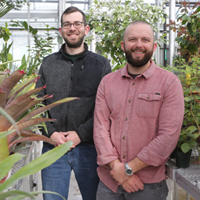
Jack Boyle, a post-doctorate Mellon Fellow at W&M, is lead author on a paper that shows GMOs are not the main culprit for the decline of the monarch butterfly, a finding that goes against claims made by scientists and activists for decades.
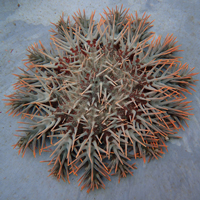
Jonathan Allen, an associate professor of biology at W&M, is part of a team that discovered that the crown-of-thorns seastar can reproduce by larval cloning.
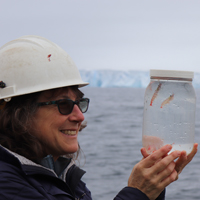
A new study based on careful analysis of 90 years of scientific catch data from the South Atlantic Ocean shows that the geographic distribution of Antarctic krill has contracted nearly 300 miles southward in concert with ocean warming, raising concerns for international fisheries managers.
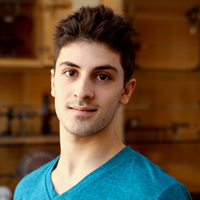
Jacopo Gliozzi is the 2019 recipient of William & Mary’s Thomas Jefferson Prize in Natural Philosophy. The honor is endowed by the trustees of the Thomas Jefferson Memorial Foundation to recognize excellence in the sciences and mathematics in an undergraduate student.
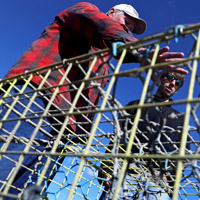
The survey will gauge opinions and preferences on “ghost” pots in Virginia waters.
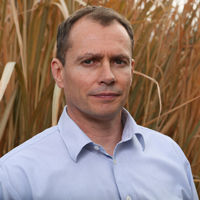
Bird-human actions can end in tragedy — for bird as well as human. John Swaddle believes technology and a solid understanding of bird behavior can make those tragedies less frequent.
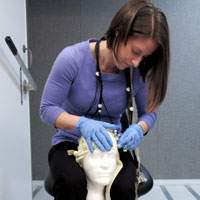
Behind a gray door in the basement of William & Mary’s Integrated Science Center is a narrow hallway that leads to three identical rooms. Each room is furnished with a desk, a chair and a computer monitor.
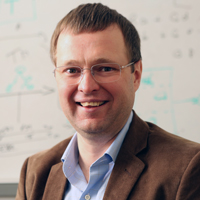
Imagine the 30,557 words of Shakespeare’s Hamlet being written simultaneously by tens of thousands of people. To maintain the elegance of the prose, there is a necessary interplay between words.
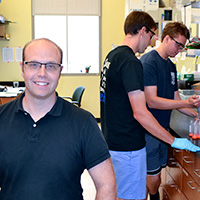
Doug Young works in an area where the worlds of chemistry, biology and engineering meet, focusing on a class of molecules known as “unnatural amino acids.”
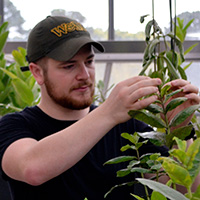
Monarch butterflies must grow where they're planted (or, rather, laid) but David De La Mater says if he were a monarch caterpillar with a choice, he’d pick a nice stand of milkweed in New England.
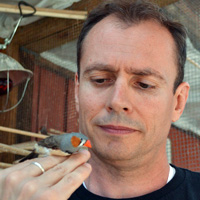
John Swaddle believes he can save a lot of birds just by getting them to look up. One reason that birds fly into buildings is that they’re not looking where they’re going. They really can’t, because they’re not built that way.
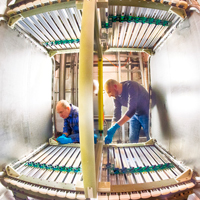
The scope of the LBNF-DUNE project approaches the preposterous. A thousand or so scientists, representing more than 160 institutions in 30 nations, are working on an apparatus that will shoot a beam of mysterious, identity-shifting particles 800 miles through solid earth in hopes of getting a better handle on some of the most puzzling questions of science.
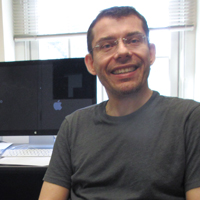
Andreas Stathopoulos is part of a collaboration that aspires to simulate the building blocks of matter on some of the biggest computers ever made.
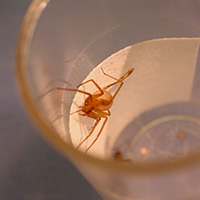
An international collaboration between William & Mary scientists and colleagues at the University of Oxford has discovered that the brown recluse makes extra-tough silk by spinning loops into each strand.
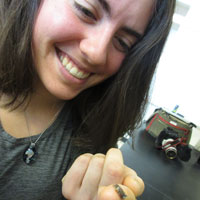
Anna Klompen is known in certain circles as Flatworm Mom. Karina Brocco French is developing her own alternate maternal identity: Cannibal Mom.
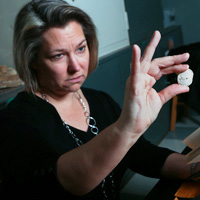
Rowan Lockwood is extracting pearls of data from long-dead oysters. She has strung those data pearls together to craft a set of suggestions for the re-oystering of today's Chesapeake Bay.

The eastern black rail is small, secretive, mysterious and in trouble. It’s a sparrow-sized marsh bird. It hardly ever flies, and gets around by creeping through dense wetland vegetation.

Chris Conway recalls a moment in his childhood in which he was chased by a neighbor’s aggressive dog. The experience didn’t scar Conway, but it did leave a lasting impression on someone else — his brother, who saw everything from afar.
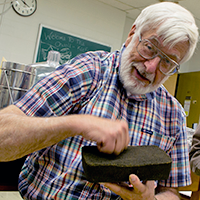
Moses and Aaron, the Old Testament tells us, had to make bricks without straw before their people could leave Egypt and begin the journey to the Promised Land. Bob and Dick have to figure out how to make bricks from regolith before their people can leave Earth and begin colonizing Mars.
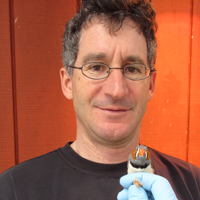
Migration is hard on a songbird. It has a commute of thousands of miles — north or south, depending on the season — a journey that often includes a nonstop flight over the Gulf of Mexico or even along nearly the entire coastline of North and South America.
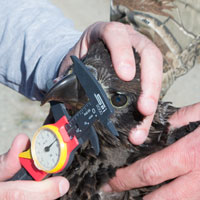
Shane Lawler was taking care of business in a loblolly pine, 90 feet above Gospel Spreading Farm, unfazed by the agitated bald eagles spiraling around his head. "All right!" he yelled to Bryan Watts, waiting at the base of the tree. "I've got one bird in a bag."
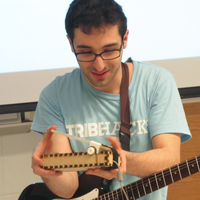
Some visitors to tribeHacks stepped out of Small Hall onto the William & Mary campus on Sunday to enjoy a bit of sun before the presentations got under way. They saw four students, carrying a pair of quadcopters, making their way toward the door.
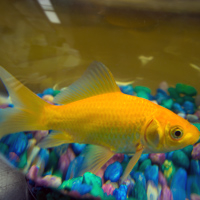
What if we could design industrial filters that just don’t clog? William & Mary ichthyologist Laurie Sanderson has a patent pending on a new type of filter that is designed to be clogless, or at least clog-resistant.
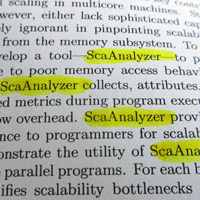
Computer developers work like runners in a race. One foot — software — has to keep pace with the advancement of the other foot — hardware. (And vice versa, of course).
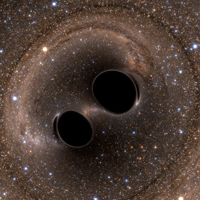
William & Mary’s physics community squeezed into a single room the morning of Feb. 11 to hear the announcement, a group of just-from-class undergraduates finding room on the floor and in odd corners.
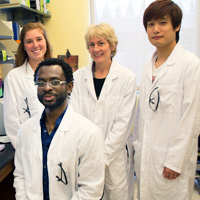
Think of a cell as a city, a metropolis both constructed of and populated by proteins.
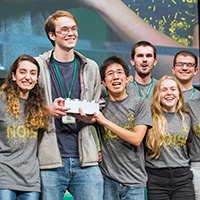
An interdisciplinary team of William & Mary students have brought home one of the biggest prizes in synthetic biology, an honor that has been called the World Cup of Science.
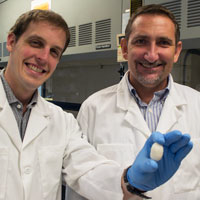
Hannes Schniepp and Sean Koebley talk about silk as being either alive or dead.
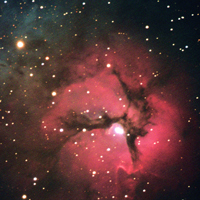
Jacob Gunnarson’s first reaction upon being handed the keys to the observatory was one of moderate horror.
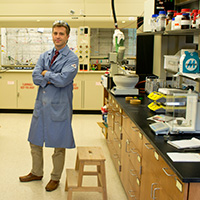
Alkaloids are members of a vast family of molecules that are chemically organic and also occur in nature. All forms of life have evolved ways to produce these useful chemicals.
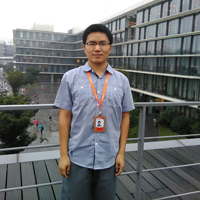
Online ratings and reviews are a helpful, if imperfect, guide for potential customers.
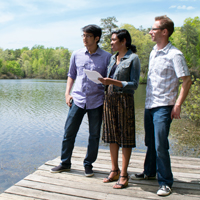
Lake Matoaka has a thriving and diverse population of viruses living in its waters. And that’s good.
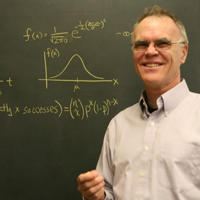
If there is a fire hydrant in front of your home, premiums on your homeowner’s insurance will be lower than the same home without a fire hydrant in its proximity.
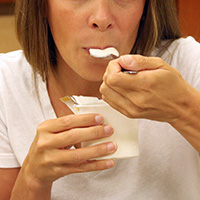
Psychologists have traditionally looked to the mind to help people living with mental health issues. But a recent study led by William & Mary researchers shows that the stomach may also play a key role.
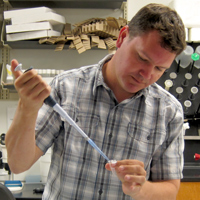
You have to look pretty closely to find Matthew Wawersik's name on this paper. The list of authors and their affiliations goes on for most of four pages.
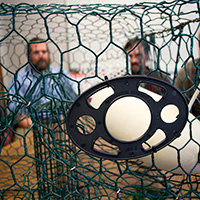
PHAs are plastics that are made by bacteria. PHAs also are eaten by bacteria.
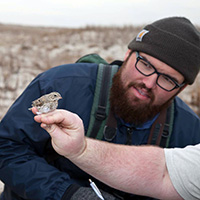
The subdued color palette of this habitat is reminiscent of west Texas.
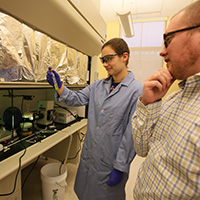
William & Mary chemist William McNamara is taking a “bio-inspired” approach to the world’s energy crisis by turning to nature’s very own chemical power plant: photosynthesis.
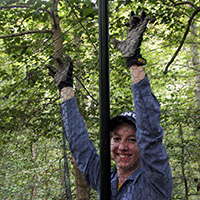
A team of biologists at William & Mary has begun a long-term experiment to determine what is behind the degradation of the College Woods ecosystem.
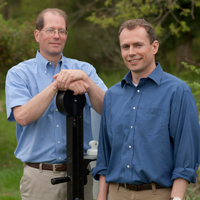
Scarecrows have never worked, and history shows that advancements in technology haven’t worked much better when it comes to shooing birds away from ripening crops.
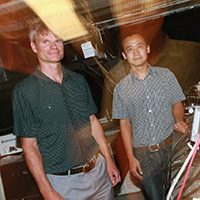
The surface of a metal seems smooth, but a closer look—much closer, at the atomic level—will show that the same surface resembles the surface of a beehive.
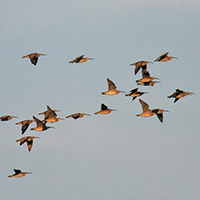
Over the songs of Swainson’s thrush and white-throated sparrows come the soothing calls of approaching whimbrels. Soon 24 birds in formation appear over the tree line and begin a wide circle over the blueberry field.
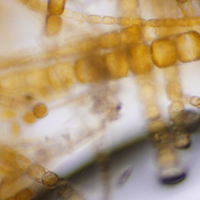
William & Mary scientists are rebooting their algae biofuel initiative, aiming to build on opportunities brought about by new processes, new funding and newly patented apparatus.
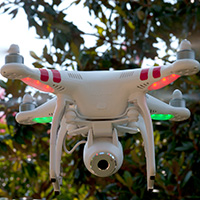
They don’t call it a drone, because it’s not a drone.
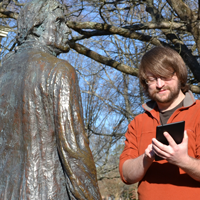
Mike Panciera had already helped a blind man navigate the perilous fantasy worlds of video games. It made sense that the next step would be to design a mobile app to help the blind find their way through the interiors of real buildings.
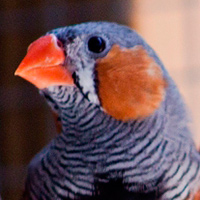
Mercury takes a toll on the population of songbirds, even at sublethal doses.
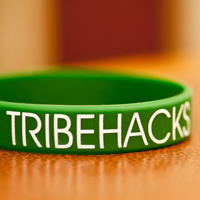
H. Wade Minter, the chief technology officer at a company that provides web and mobile services to five million users, stood in Swem Library, looked out upon the frantic final minutes of William & Mary’s first 24-hour hackathon and talked about the influence of the liberal arts on computer science.
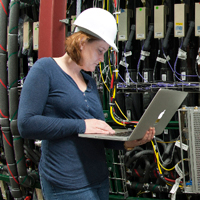
Neutrinos are interesting to physicists for some of the same reasons that pottery shards are interesting to archaeologists.
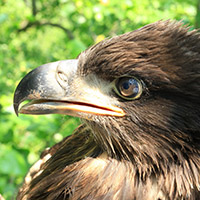
The Center for Conservation Biology has begun its 2014 flights to survey nesting bald eagles and Mitchell Byrd is once again in the co-pilot seat.
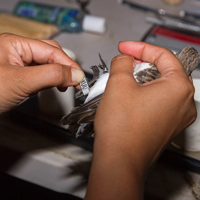
It is dawn near the mouth of the Pacora River in Panama and the shorebirds are beginning to break from their night roost on an offshore bar. They move out over the water in dozens of flocks, merging and splitting, folding and undulating, to make abstract sculptures between water and sky.
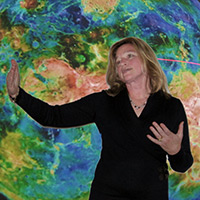
Listening to Ellen Stofan talk to a room full of geologists is like being in on a brainstorming session for a new science fiction movie.
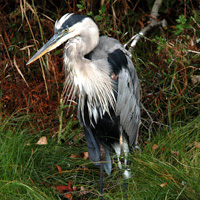
In February, the great blue herons of the Chesapeake Bay region will begin their nest building or repair chores and their mating rituals—perhaps in a tree they’ve been sharing with bald eagles.
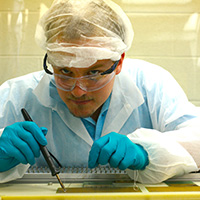
The weak force is, for laymen, the least known of the quartet of interactions that run the universe as we know it.
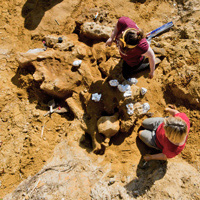
Cornwallis sank as he died, making a couple of revolutions on his way down, finally ending belly up and flippers akimbo, making a sort of “whale angel” on the ocean bottom.
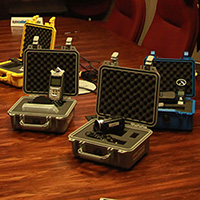
Hype surrounding massive online courses known as MOOCs has consumed much of the e-learning conversation in higher education over the past several years.
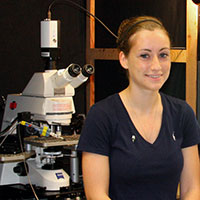
Local students are cropping up in William & Mary labs, performing research even before they’ve finished high school.
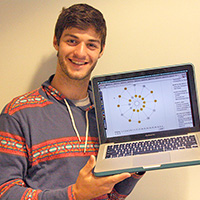
William & Mary math student Robert Torrence is shedding some light on a decades-old game that continues to puzzle thousands each year.
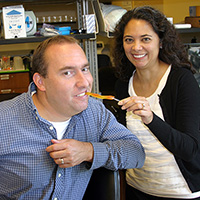
Early one morning in December, Jon Allen had decided that enough was enough.
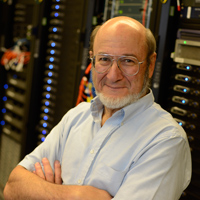
The premature baby’s life is well monitored, but precarious. Among the dangers that preemies face are episodes of central apnea.
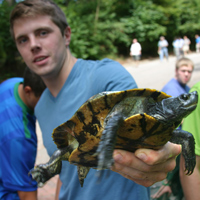
It was probably the worst day of the summer to trap turtles. The weather was good and the season was right. But Randy Chambers’ Wetland Ecosystems class just happened to pick Sept. 4 for their turtle trapping.
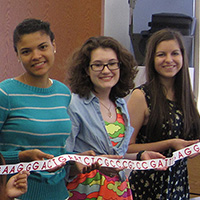
It was the summer that the freshmen ruled the sequencer. Technically, they finished their freshman year and therefore did their summer work as rising sophomores. But never mind quibbles.
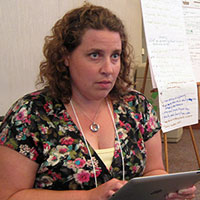
Dozens of geoscience instructors across the nation gathered at William & Mary this summer to discuss ways to enhance student success in earth-science programs at America’s two-year colleges.
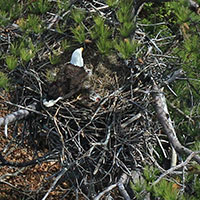
There are more bald eagles than ever nesting along the James River—and it’s likely that the population is getting close to the saturation point.
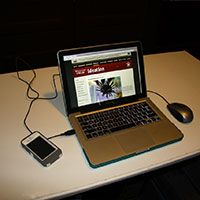
The average American spends about seven hours a day looking at an electronic screen. With this much of a role in our daily lives, our electronic devices must be updated frequently with the newest technology to reflect usage patterns and make the user’s experience more efficient and safe.
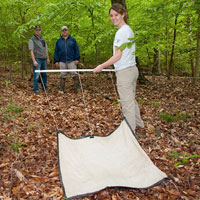
Collecting tick specimens is easy—you drag a white piece of canvas over the right piece of ground, then turn it over. Voila—ticks!
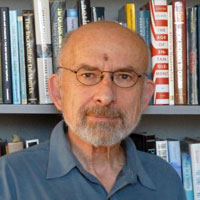
Hans von Baeyer says that we all can stop worrying about Schrödinger’s Cat. Science’s most famous imaginary feline may indeed be dead—or perhaps it’s alive. But it is certainly not both.

Spring is in full bloom in William & Mary’s biology labs, with more than 350 undergraduate students spawning marine invertebrates.

It was a hard act to follow. What could possibly be a follow-up to a group of freshmen discovering a new form of life and finding new genes in its genome?
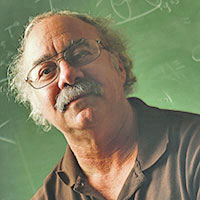
It turns out that the Higgs boson looks exactly like Marc Sher always said it would, and now he’s a little bummed.
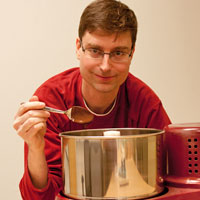
Many physicists believe that dark matter comprises most of the stuff of the universe, but Erlich can’t prove that dark matter even exists. Dark chocolate is another matter.
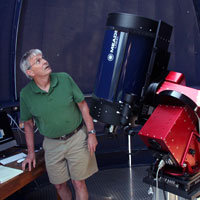
The transit of Venus is, at best, a twice-in-a-lifetime event. Transits come in pairs, eight years apart, and these pairs come more than 100 years apart.

For the past five summers, while other students were hitting the beach, William & Mary math majors had been hitting the books and the labs to conduct computational mathematics research.

Erica Lawler says that they look like little ice cream cones, but Lawler is in fact referencing the upside down northern saw-whet owl that she was able observe after an opportunity she took to spend a night out in the field with them.

The nest sits nearly a hundred feet up in a lone loblolly pine in Richmond, where a pair of eagles makes their home along the fall line of Virginia’s longest river. An interesting story unfolds as the eagles star in their own reality show.
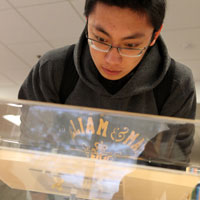
It wouldn’t look out of place in a library at Hogwarts, and indeed Philosophiæ Naturalis Principia Mathematica is a work of an age in which alchemy and modern science were just beginning to diverge.
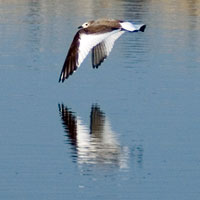
Now’s the time for birders who want to add to their life lists, says Dan Cristol, an ornithologist at William & Mary.
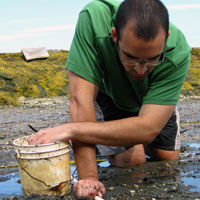
The William & Mary chapter of the Marine Science Society is only a year old, but has already been honored with the Outstanding Student Section Award from the Marine Technology Society for 2012.
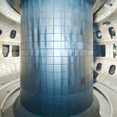
Saskia Mordijck believes that safer, more economical fusion-generated electricity is achievable, but more work—and funding—are necessary to make it a reality.

Jeff Shields and colleagues at the Virginia Institute of Marine Science have succeeded in their 15-year effort to unravel the life history of Hematodinium.
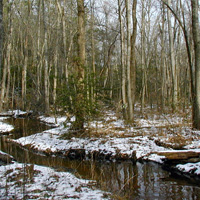
Every day throughout the Chesapeake Bay’s 64,000-square-mile watershed, city and county officials make land-use decisions—approval of a new subdivision, siting of a retention pond, preservation of a green space—that ultimately impact the Bay.
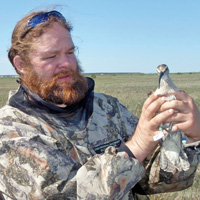
Catching whimbrels on their breeding grounds in the Arctic Circle is quite different from trapping those same birds in their mid-migration staging areas on Virginia’s Eastern Shore.
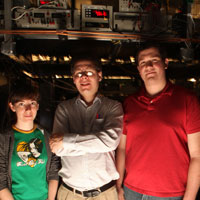
Cold atoms are going to generate hot research at William & Mary.
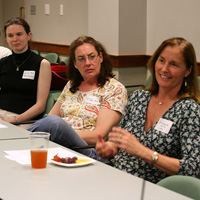
A pipeline with a leak isn’t very efficient—much of whatever is supposed to be transported will be lost along the way. That’s exactly what’s happening to women as they pursue careers in science.
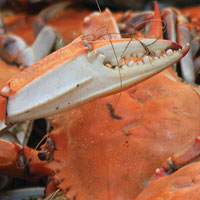
Local seafood once provided a major economic and cultural link between the Chesapeake Bay and the people in its watershed. Today—with a few exceptions—the crabs, oysters and fish on your plate are more likely to come from the Gulf Coast, the Caribbean or the Far East.
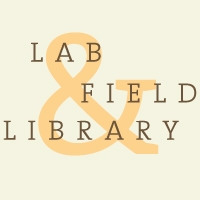
Governor Bob McDonnell and the Science Museum of Virginia have named Chancellor professor John Milliman of the College of William and Mary’s Virginia Institute of Marine Science as one of Virginia’s Outstanding Scientists for 2012.

AidData, in partnership with the Strauss Center’s Climate Change and African Political Stability program (CCAPS), has launched an online data portal that enables researchers and policymakers to visualize data on climate change vulnerability, conflict, and aid, and to analyze how these issues intersect in Africa.

"Why do we study geosciences?” Heather Macdonald asked her audience at the Robert Foster Cherry Lecture. She then ran down a list of timely geoscience topics, including hurricanes, earthquakes, climate change, volcanoes and petroleum and other natural resources.

Professor Harry Wang and colleagues at the Virginia Institute of Marine Science, College of William and Mary, have won a prestigious Governor’s Technology Award for their leading role in the Chesapeake Bay Inundation Prediction System, or CIPS.
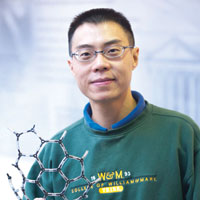
Like most inventors, Jefferson Lab scientist Xin Zhao's moment of inspiration was prompted by a need, and the result was an invention that could someday see batteries in electric vehicles and similar devices boosted or replaced by high-power, high-capacity, fast-charge/discharge energy storage systems using graphene.

New discoveries in “marine forensics” by researchers at the Virginia Institute of Marine Science, College of William and Mary, will allow federal seafood agents to genetically test blue marlin to quickly and accurately determine their ocean of origin.

The first Cooperative Research and Development Agreement (CRADA) between William & Mary and the U.S. Army Research Institute of Environmental Medicine (USARIEM) has its roots in one professor’s quest to provide his class with a textbook.
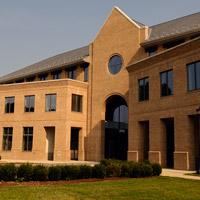
The Tidewater Team is helping fourth- and fifth-grade students get their hands dirty—creating mini-ecosystems, fictional animals, volcanoes and ice cream makers.
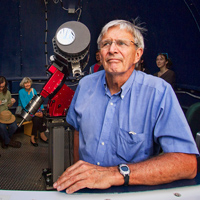
Cheerful optimism dueled with philosophical resignation atop Small Hall as moving clouds alternately obscured and revealed the setting sun.
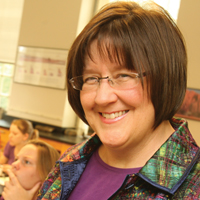
Heather Macdonald has always been eager to get her new geosciences students out of the classroom and into the field—especially if there is a handy outcrop.
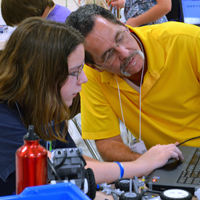
“Three, two, one …” A rocket made out of a two-liter bottle shoots into the blue sky, a line of white smoke trailing behind.
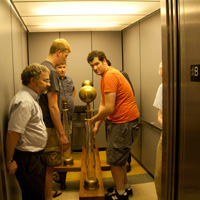
It’s been out with the old and in with the new for the physicists in Small Hall.
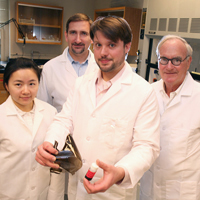
A group of researchers at the College of William & Mary have made important advances in technology combining polymers—the material of the present—with graphene—the material of the future.
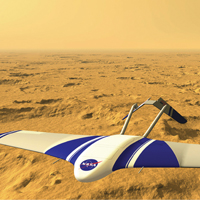
William & Mary might become the base for a mission to Mars. The mission is called ARES—the Aerial Regional-scale Environmental Surveyor. Joel Levine explains that the idea is to send an airplane to Mars.
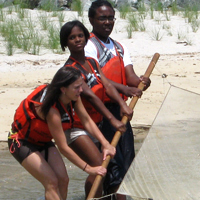
America needs more good, seasoned K-12 STEM teachers—a set of professionals who not only understand science and math, but who also know how to make other people understand science and math.
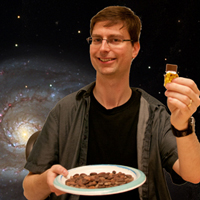
Joshua Erlich was not teaching a cooking class when he talked about fat content, taste and mouth feel to an audience of several dozen members of the Williamsburg community one bright Saturday morning.
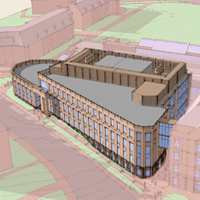
Members of the Committee on Buildings and Grounds of William & Mary’s Board of Visitors were treated to an advance look at the Machine for Science and other features of Phase 3 of the College’s Integrated Science Center.
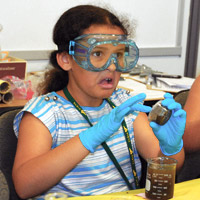
Virginia’s beaches are in trouble. Swimmers are getting sick. The water looks ugly. The governor’s scientists have no idea what’s wrong. Then the governor hears about a two-week convention of young scientists—very young scientists—at William & Mary’s School of Education. He issues a desperate plea for help.
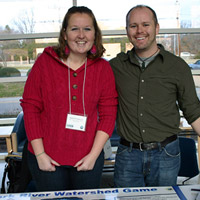
Theresa Davenport was having some trouble with a football player. Davenport was explaining to a biology class at Grafton High School about some of the problems that can stem from seawater that is low in oxygen.
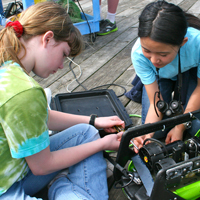
A partnership between the Virginia Institute of Marine Science and the Watermen’s Museum in historic Yorktown is giving students at three local schools an opportunity to dive into Colonial history—literally.
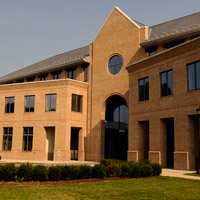
While William & Mary’s students are away from campus in summer, a new—and considerably younger—set of students will take their place in the dorms and in the classrooms, learning about science and cutting-edge technology.
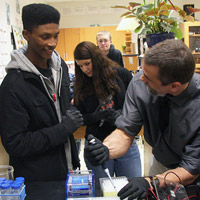
Every summer since 1999, a number of high school biology teachers gather in the labs and classrooms of William & Mary’s Integrated Science Center to work with and discuss the latest advances in research with the College’s biologists.
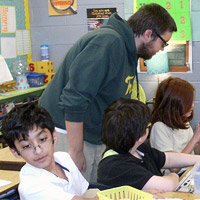
When Geology on Wheels rolls into an elementary school, the star is usually obsidian—at least as far as the kids are concerned.
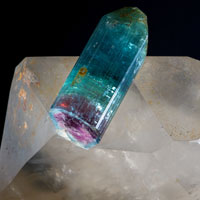
The William & Mary Department of Geology has acquired a world-class mineral collection that geologists say will be a valuable resource in the department for many years.
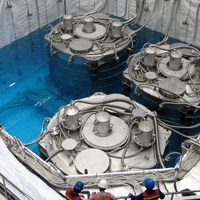
An international team of physicists has reported the first set of observations detailing important behavior of neutrino oscillation, an accomplishment that is a necessary step to additional experiments intended to answer fundamental questions about the makeup of the universe.
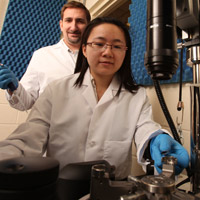
The world may just have moved a step closer to the reality of comic books.
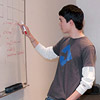
Sometimes the guys on Team Gold say “worlds.” Other times, they say “finals.” Both terms refer to the World Finals of the Association for Computing Machinery’s International Collegiate Programming Contest (ACM-ICPC) to be held in May in Warsaw, Poland.
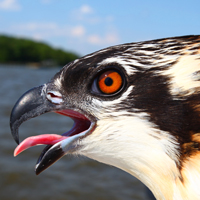
Do you have an osprey nest in your neighborhood? If so, the Center for Conservation Biology (CCB) wants to hear from you—on a regular basis.
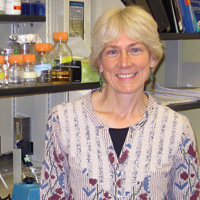
William & Mary molecular biologist Lizabeth Allison has received a grant of more than $1 million from the National Science Foundation (NSF).
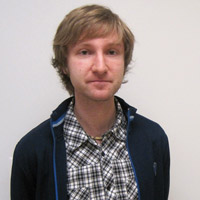
Ari Cukierman enrolled as a freshman at William & Mary intending to major in music and philosophy. He'll graduate near the top of his class of 2012 as a physics-math double major, with at least one important peer-reviewed paper to his credit.
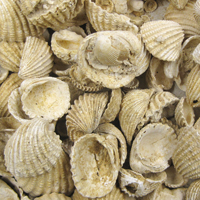
When it comes to the hard work of evolutionary paleontology, you can’t beat the humble clam.
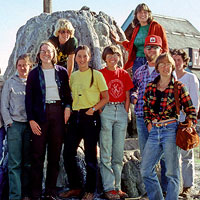
William & Mary’s Department of Geology is celebrating its 50th birthday—not even a tick of the clock in terms of the age of the earth.
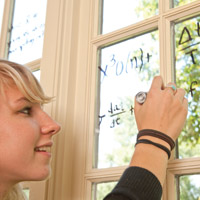
All actions in nature can be expressed numerically. That’s biomathematics in a very, very small nutshell. Kiah Hardcastle has her own way to describe the concept.

William & Mary mathematician Chi-Kwong Li has been awarded a Fulbright grant by the Council for International Exchange of Scholars.
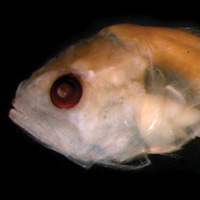
For many anglers, the point of fishing is to catch the biggest fish—whether it’s for bragging rights or the frying pan.
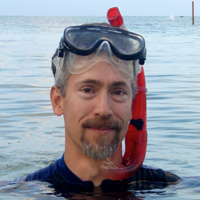
Emmett Duffy of the Virginia Institute of Marine Science (VIMS) has been honored with the inaugural Kobe Award for his achievements in marine science.
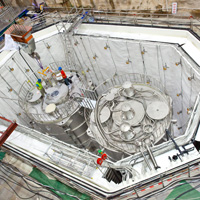
A team of William & Mary physicists has an important role in the Daya Bay Reactor Neutrino Experiment, a multinational collaboration to advance science’s understanding of ubiquitous, yet mysterious, particles known as neutrinos.
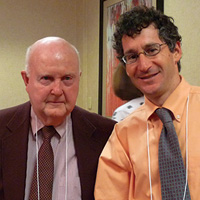
William & Mary bird scientists Mitchell A. Byrd and Dan Cristol were each honored for their contributions to ornithology by the Virginia Society of Ornithology (VSO).
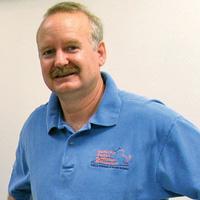
The Chesapeake Bay Program’s Scientific and Technical Advisory Committee (STAC) has appointed Kirk Havens of the Virginia Institute of Marine Science, College of William and Mary, to serve as the committee’s vice chair and chair-elect.
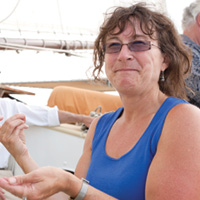
Passengers on the schooner Alliance out of Yorktown in July were offered fresh seafood snacks—jellyfish.
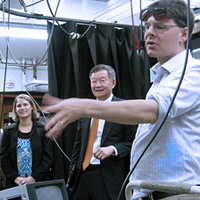
Small Hall is no longer too small. “We were just bursting at the seams in terms of space,” said David Armstrong, Chancellor Professor of Physics and department chair.
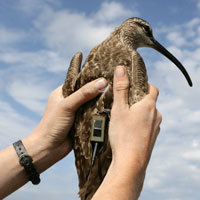
Hummingbirds hover and dart. Falcons swoop and dive. Cooper’s hawks are capable of jaw-dropping aerobatics. Add the homely whimbrel to this list of extreme fliers.
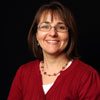
Lisa Landino studies the chemistry behind what she calls “the big three” neurodegenerative diseases: Parkinson’s, amyotrophic lateral sclerosis and Alzheimer’s.

Reinard Primulando, a Ph.D. student in the William & Mary Department of Physics, is a recipient of a Fermilab Fellowship in Theoretical Physics.
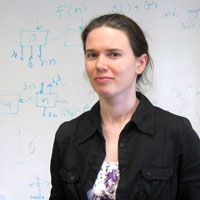
Sometimes you want to prevent extinction. In other cases, you want to hurry extinction along.
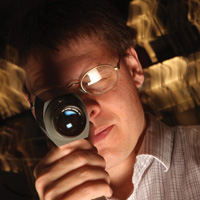
A collection of atoms in the basement of Small Hall is a million times colder than outer space. It's one of the coldest spots in the universe, but it's not cold enough. Yet.
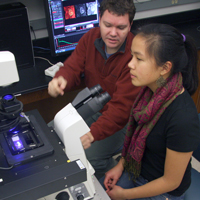
Matthew Wawersik spends a lot of time looking at fruit flies. His lab uses these little bugs as a model to study germ line stem cell development.
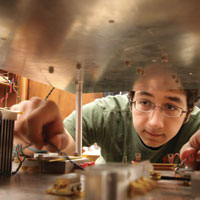
The oscillations inside of an atom are more regular than a pendulum—or virtually anything else.
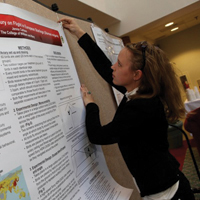
Jenna Carlson gets ready to exhibit her work at the 10th annual Graduate Research Symposium.
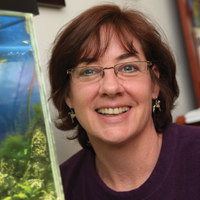
Pamela Hunt, professor of psychology and associate director of the interdisciplinary neuroscience program, was one of three recipients of the 2011-2012 James McKeen Cattell Fund Fellowships

Robert J. Diaz of the Virginia Institute of Marine Science received one of four Outstanding Scientist Awards for Virginia for 2010.
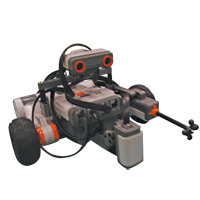
A group of eighth-graders huddles around a rectangular box on the floor of their classroom and watch the robot they designed and programmed navigate its way around the perimeter.

William & Mary has entered into a “sister university” arrangement with the University of Electronic Science and Technology of China (UESTC), a relationship that both sides hope will generate a wide range of mutually beneficial educational and research initiatives.
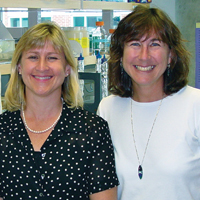
They share a first name and a passion for oceanography, but beginning in late January, professors Deborah Bronk and Deborah Steinberg of the Virginia Institute of Marine Science became polar opposites—literally.

A new study of local sea-level trends by researchers at the Virginia Institute of Marine Science brings both good and bad news to localities concerned with coastal inundation and flooding along the shores of the Chesapeake Bay.
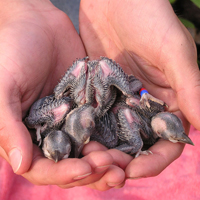
Virginia’s breeding population of red-cockaded woodpeckers reached a new high this year, with nine breeding pairs documented in late May.
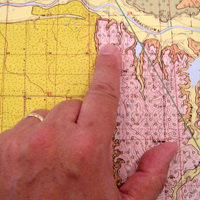
David Soller ’76 is the keeper of what is possibly the world’s largest digital glove compartment.
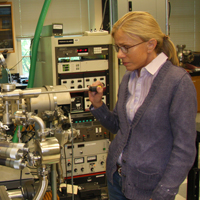
Vanadium dioxide—or VO2—is an interesting substance with a number of intriguing properties.
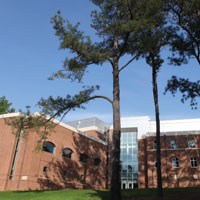
“The building itself is always part of a physics experiment” says Keith Griffioen, professor and chair of the physics department. And in recent years, he added, Small Hall often was an unwanted part.

William & Mary’s first freshman phage lab has demonstrated what possibly is the straightest learning curve known to science: zero to co-authorship in a peer-reviewed journal in under three years.
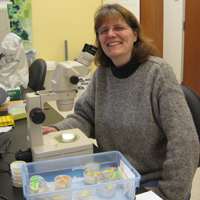
A paper published in the prestigious online journal Nature Communications reveals the molecular biology behind a certain worm’s ability to break—or at least ignore—the laws of Mendelian genetics.
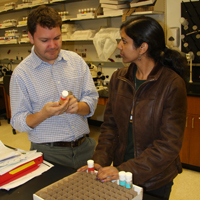
When Mohima Sanyal '14 would drop a transgenic mouse into the lab’s Y-shaped maze, she had a pretty good idea of how the mouse would react.
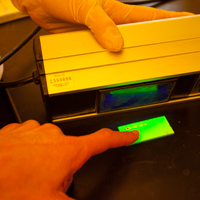
William & Mary’s Elizabeth Harbron is one of six U.S. chemists to be named Henry Dreyfus Teacher-Scholars.
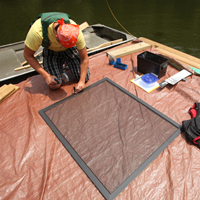
At first glance, algae seem like ideal candidates for biofuel. After all, each algal organism has at its center a dab of energy-rich oils and sugars. If you get enough algae, you can extract the oil—or ferment the sugar into alcohol—and use it to put a sizeable dent in the world’s thousand barrel per second petroleum consumption.
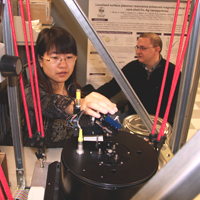
Two William & Mary scientists working in the laboratory of R. A. Lukaszew recently were recognized at the 57th International Symposium of the American Vacuum Society.

Kelly Joyce’s book, Magnetic Appeal: MRI and the Myth of Transparency, comes with a prestigious award and compelling accounts from the field.
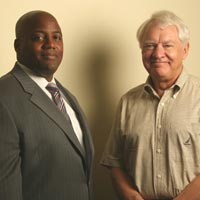
William & Mary’s Technology and Business Center (TBC) has entered into a collaboration with the James City County Economic Development Authority (EDA) to take over management responsibilities of the James City County Business and Technology Incubator.

U.S. Senator Mark Warner visited the Virginia Institute of Marine Science in July to discuss oyster-restoration strategies in the Chesapeake Bay. David Malmquist

The William & Mary School of Education has been awarded $5 million as part of a larger U.S. Department of Education grant to improve science and math education in Virginia schools.
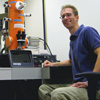
…and our transmission electron microscope is running just fine, thanks
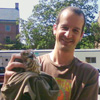
The saga of William & Mary's family of Cooper's hawks continues.
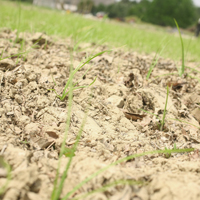
Diners in Williamsburg-area eateries late this summer may be tasting the results of a William & Mary sustainable agriculture internship.
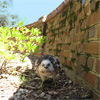
One of the Sunken Garden's Cooper's hawks is out of the nest.
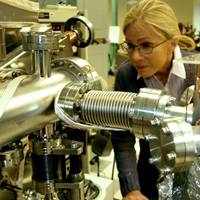
A William & Mary/JLab team takes a basic-science approach to a more secure homeland
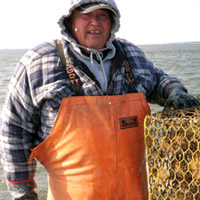
Out-of-work commercial watermen pulled up more than 9,000 derelict so-called "ghost pots" from the Chesapeake Bay and its tributaries this winter.

Nuclear physicists gather here to sort out the strong force.
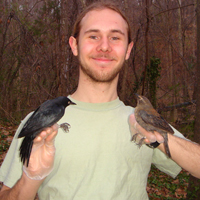
Rusty blackbirds are threatened across their range--except on the William & Mary campus.
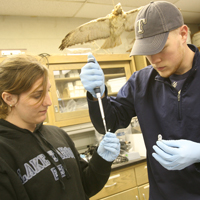
The College of William and Mary has been awarded $1.2 million in funding by the Howard Hughes Medical Institute (HHMI), part of a nationwide program to help universities strengthen undergraduate and precollege science education.
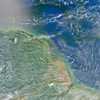
Steinberg-led VIMS team to join Amazon River research project by David Malmquist
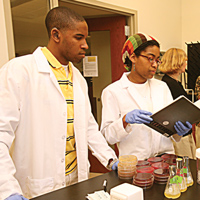
CrimD wins recognition in microbiological circles.
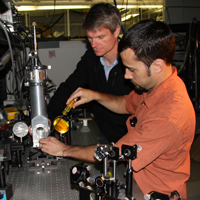
Your first fuel cell-powered car just moved a little closer.

Science honors Macdonald and colleagues for professional-development resources.
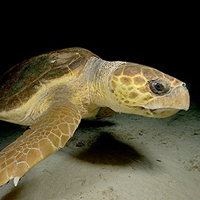
East Coast loggerheads proposed for endangered species list.

New VIMS-W&M cooperative effort is expected to be popular.
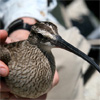
Hope, a whimbrel fitted with a transmitter last year, has returned to the Eastern Shore. She's the first whimbrel the Center for Conservation Biology has tracked on the migratory "full circle."

A letter from several participants in the Chesapeake Algae Program is printed in the leading journal "Science." The writers point out several environmental benefits of using algae as biofuel feedstock.
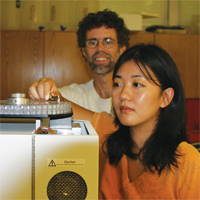
William & Mary's interdisciplinary environmental program is expanding, thanks to a new post-doctoral fellowship program.
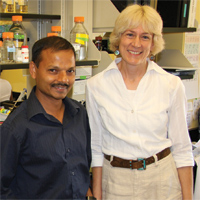
Lizabeth Allison studies nuclear transport, but her work has nothing to do with nuclear energy.
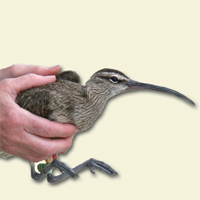
These shifty, stilt-legged shorebirds continue to surprise even seasoned scientists.
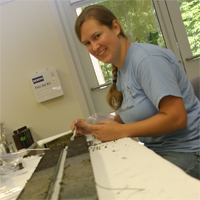
William & Mary's landmark lake is full of history, even below the waterline.
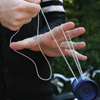
Sebastian Brock '11 puts the Bassalope through its paces.
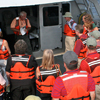
Members of the Virginia House of Delegates' Agriculture, Chesapeake and Natural Resource Committee visited the Virginia Institute of Marine Science in August to talk with researchers about issues facing the Chesapeake Bay and its watershed.

The Schroeder Center for Health Policy at the College of William & Mary has started the 2009-2010 academic year with a new name and a new director.
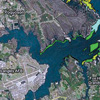
Researchers at William & Mary's Virginia Institute of Marine Science (VIMS) have created an interactive map that allows web users to see the coverage of underwater grasses in the Chesapeake Bay and its tributaries.

A number of researchers converge on a way to take algae and make it into fuel on an industrial scale.
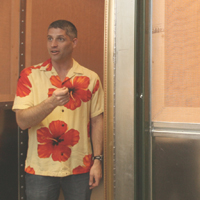
Rogers Hall has been renovated and is now part of the Integrated Science Center. The labs are working, even as unpacking continues.
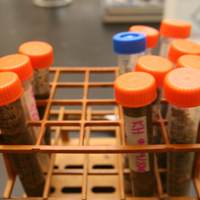
Members of a freshman seminar have found a strain of bacteriophage that may be previously unknown to science. The phage was found in William & Mary's landmark Crim Dell.
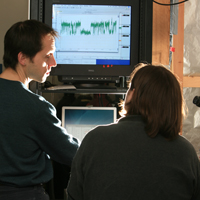
New research reveals a new paradigm for the neural origins of the rhythm of respiration.
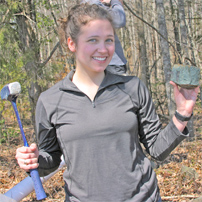
Seniors in the geology department do a whirlwind tour from the bottom of a slate quarry to the top of the Blue Ridge Mountains.

The newest version of Google Earth contains data on marine "dead zones" contributed by Professor Robert Diaz of the Virginia Institute of Marine Science, College of William and Mary.
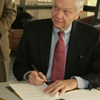
The College of William and Mary and Virginia Commonwealth University are collaborating to take advantage of the research and expertise of their environmental science programs.
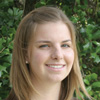
Two William and Mary students are recipients of summer research fellowships from the American Physiological Society, continuing the kinesiology department's excellent record with this competitive award for undergraduates.
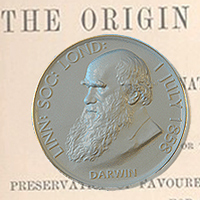
The Linnean Society of London has awarded Darwin-Wallace medals every half-century since 1908. The most recent class includes H. Allen Orr ’82, ’85 and Mohamed Noor ’92.

A new analysis of the worldwide scientific literature shows that professors Deborah Steinberg and Jim Bauer of the Virginia Institute of Marine Science are at the cutting edge of their fields.
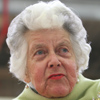
The Virginia Institute of Marine Science dedicated two new research buildings-Andrews Hall and the Seawater Research Laboratory-in an April 16 ceremony that highlighted the many contributions made to VIMS and the College of William and Mary by the late Senator Hunter B. Andrews and his wife Cynthia.
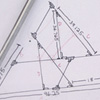
The idea is to harness the sun to generate electricity, but first the people in SCORS had to know which photovoltaic technology is best to use. And to determine that, they first needed to know more about the weather.

You can't feel them, but neutrinos are passing through your body in large numbers. They have no charge and very low mass, but their scientific value is priceless.
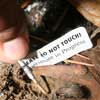
It's a new form of life. It was discovered by a lab full of freshmen... and it came out of Crim Dell.

ISC 1 is open and producing science. ISC 2 is under construction. Just wait until we build ISC 3.
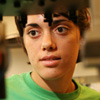
Research now under way in the new Integrated Science Center: What can an understanding of the genetics of yeast do to get us closer to a cure for cancer? Plenty.

Oxidative damage of protein happens to us all, but our bodies usually fix the problem. Usually.
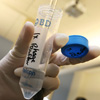
In the teaching labs of the Integrated Science Center.

Fear and other negative emotions make your world completely different. But don't worry--it happens to everybody.

Randy Coleman uses technology to teach chemistry better.
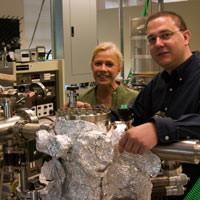
A researcher in the Department of Applied Science wins an award for working with materials that are just a few atoms thick.
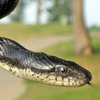
Tracking young bluebirds through telemetry can offer up some surprises.
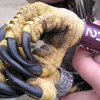
Aberdeen Proving Ground, up at the head of the Chesapeake Bay, is a busy place.
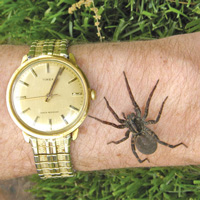
Songbirds feeding near the contaminated South River are showing high levels of mercury, even though they aren't eating food from the river itself.
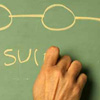
The Large Hadron Collider may show us how mass begins.
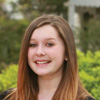
Two William and Mary kinesiology students will be performing laboratory research as undergraduate fellows of the American Physiological Society during the summer of 2008.
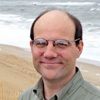
Carl Friedrichs, an oceanographer at the School of Marine Science/Virginia Institute of Marine Science at the College of William and Mary, has received the Commonwealth's highest honor for professors.
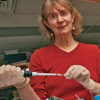
This fall, a group of freshmen will begin their first year participating in a long-term biology research project, part of an initiative to reform science education by the Howard Hughes Medical Institute (HHMI).
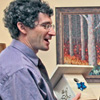
It's probably the world's only birdhouse with the scales of justice on one side and the William and Mary cipher on the other.
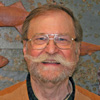
Jack Musick of the Virginia Institute of Marine Science has been awarded the Commonwealth's Lifetime Achievement in Science award for his work on the ecology and conservation of marine fishes and sea turtles.
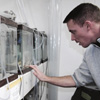
Jeffrey Shields of the Virginia Institute of Marine Science received a five-year, $2.4-million federal grant to study how fishing pressure and declines in water quality affect the emergence and spread of a blue crab disease in the seaside bays of Virginia's Eastern Shore.
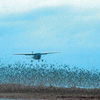
Two researchers from William and Mary's Center for Conservation Biology will travel to Panama this fall to study populations of migrant shorebirds.
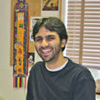
As in comedy, the secrets to acing the physics GRE are timing and a sense of the ridiculous.
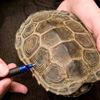
Megan Rook, a graduate student in William and Mary's Department of Biology, has received $20,000 in funding to allow her to continue her studies of diamondback terrapins.
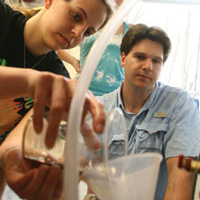
In a corner of the Keck Environmental Field Laboratory sit an old water heater, a plastic holding tank and a few pumps, set up in a purple-painted particleboard frame with the air of an eighth grade science project.
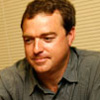
Optical illusions can be deceiving, but are we just fooling ourselves?

Undergraduates are learning techniques for finding the solution to very, very complex problems.

Researchers observe disruption of normally faithful pairs of zebra finches.

National Fish and Wildlife Foundation and the Virginia Environmental Endowment support environmentally sensitive research projects.

We've passed the halfway point in the three-year construction process of Phase I and II of William and Mary's Integrated Science Center and progress is on track to meet the first important deadline - spring break.















